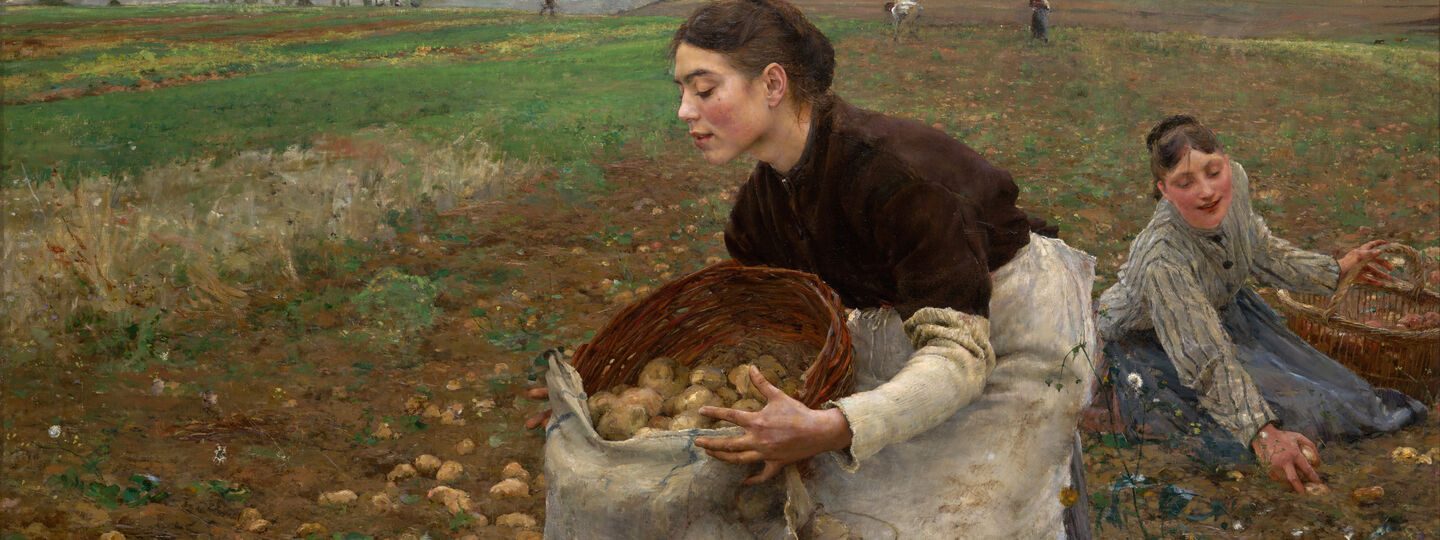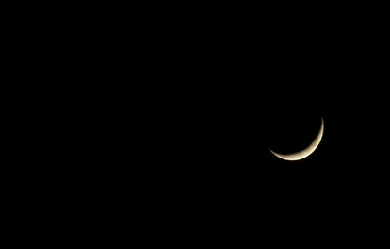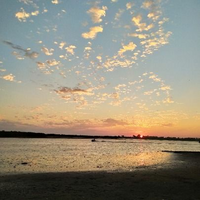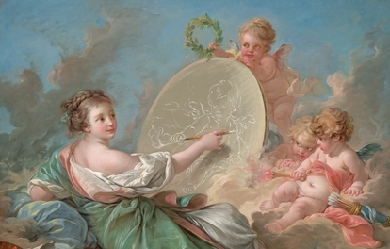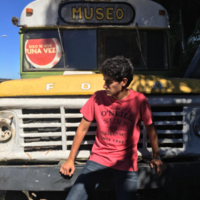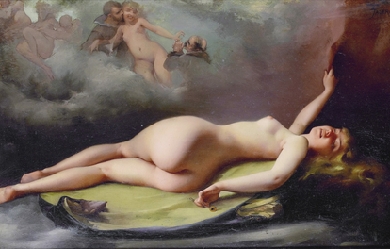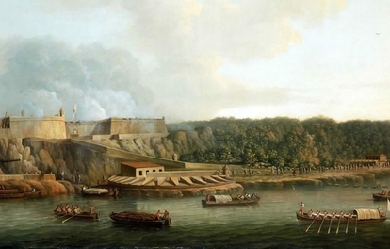
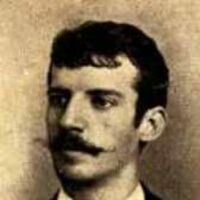
Julián del Casal Por: José Martí Aquel nombre tan bello que al pie de los versos tristes y joyantes parecía invención romántica más que realidad, no es ya el nombre de un vivo. Aquel fino espíritu, aquel cariño medroso y tierno, aquella ideal peregrinación, aquel melancólico amor a la hermosura ausente de su tierra nativa, porque las letras sólo pueden ser enlutadas o hetairas en un país sin libertad, ya no son más que un puñado de versos, impresos en papel infeliz, como dicen que fue la vida del poeta. De la beldad vivía prendida su alma; del cristal tallado y de la levedad japonesa; del color del ajenjo y de las rosas del jardín; de mujeres de perla, con ornamentos de plata labrada; y él, como Cellini, ponía en un salero a Júpiter. Aborrecía lo falso y pomposo. Murió, de su cuerpo endeble, o del pesar de vivir, con la fantasía elegante y enamorada, en un pueblo servil y deforme. De él se puede decir que, pagado del arte, por gustar del de Francia tan de cerca, le tomó la poesía nula, y de desgano falso e innecesario, con que los orífices del verso parisiense entretuvieron estos años últimos el vacío ideal de su época transitoria. En el mundo, si se le lleva con dignidad, hay aún poesía para mucho; todo es el valor moral con que se encare y dome la injusticia aparente de la vida; mientras haya un bien que hacer, un derecho que defender, un libro sano y fuerte que leer, un rincón de monte, una mujer buena, un verdadero amigo, tendrá vigor el corazón sensible para amar y loar lo bello y ordenado de la vida, odiosa a veces por la brutal maldad con que suelen afearla la venganza y la codicia. El sello de la grandeza es ese triunfo. De Antonio Pérez es esta verdad: «Sólo los grandes estómagos digieren venenos». Por toda nuestra América era Julián del Casal muy conocido y amado, y ya se oirán los elogios y las tristezas. Y es que en América está ya en flor la gente nueva, que pide peso a la prosa y condición al verso, y quiere trabajo y realidad en la política y en la literatura. Lo hinchado cansó, y la política hueca y rudimentaria, y aquella falsa lozanía de las letras que recuerda los perros aventados del loco de Cervantes. Es como una familia en América esta generación literaria, que principió por el rebusco imitado, y está ya en la elegancia suelta y concisa, y en la expresión artística y sincera, breve y tallada, del sentimiento personal y del juicio criollo y directo. El verso, para estos trabajadores, ha de ir sonando y volando. El verso, hijo de la emoción, ha de ser fino y profundo, como una nota de arpa. No se ha de decir lo raro, sino el instante raro de la emoción noble o graciosa.-Y ese verso, con aplauso y cariño de los americanos, era el que trabajaba Julián del Casal. Y luego, había otra razón para que lo amasen; y fue la poesía doliente y caprichosa que le vino de Francia con la rima excelsa, paró por ser en él la expresión natural del poco apego que artista tan delicado había de sentir por aquel país de sus entrañas, donde la conciencia oculta o confesa de la general humillación trae a todo el mundo como acorralado, o como antifaz, sin gusto ni poder para la franqueza y las gracias del alma. La poesía vive de honra. Murió el pobre poeta, y no lo llegamos a conocer. ¡Así vamos todos, en esa pobre tierra nuestra, partidos en dos, con nuestras energías regadas por el mundo, viviendo sin persona en los pueblos ajenos, y con la persona extraña sentada en los sillones de nuestro pueblo propio !Nos agriamos en vez de amarnos. Nos encelamos en vez de abrir vía juntos. Nos queremos como por entre las rejas de una prisión. ¡En verdad que es tiempo de acabar! Ya Julián del Casal acabó, joven y triste. Quedan sus versos. La América lo quiere, por fino y por sincero. Las mujeres lo lloran. Julián del Casal, florece en la estación de mayo Por: Juanita Conejero Nació en Cuba y desde aquel día 7 de noviembre de 1863, cual difícil le fue andar, y para olvidar todas sus tristezas se refugió en el arte, persiguiendo como él decía fantásticas visiones. Julián del Casal, “aquel nombre tan bello” al decir de Martí, aquel poeta con el que no pudo nunca hablar, pero que era “muy conocido y amado en toda América” y del que predijo: “ya se oirán los elogios y las tristezas” y “es que en América, está en flor la gente nueva que pide peso a la prosa y condición al verso”. Así escribía el Apóstol, en Patria, Nueva York, un 31 de octubre de 1893 en ocasión de la muerte de aquel cubano, que gustaba de la poesía “doliente y caprichosa” de Francia con la rima excelsa y que fue capaz de asumirla, con la elegancia de su personal sentimiento y su directa cubanía. Sólo vivió treinta años. Hace ciento veinte años publicó Hojas al Viento su primer libro, en él, la influencia de los románticos y del parnasianismo francés. Mucho leía el gran Casal, mucho respetaba las formas métricas tradicionales, pero al ponerse en contacto con las últimas innovaciones francesas de su época y sobre todo cuando profundizó en la obra de Baudelaire y de Verlaine, este caudal poético enriqueció su verso y su prosa. Para Martí, no había dudas, que el verso de Julián era hijo de la emoción y fino y profundo, como una nota de arpa. En un artículo publicado en La Habana Elegante, y suscrito por Enrique Hernández Miyares, se expresa: “Julián de Casal es mi hermano de ideales…..él es un poeta sin tacha y sin miedo como se decía de los caballeros de la Edad Media. Ha impreso su libro Hojas al Viento y “ya está”, como él dice. Como todo si el libro gusta y la edición se vende, ya veremos pompa en la alcobita de Julián, donde hay mayólica en los estantes, libros hasta en los percheros y se ve la efigie del Santo Padre al lado de la de Sarah Bernhardt”. Dedica Casal este primer libro a quién considera su venerado maestro: Ricardo del Monte. ¡Oh hermosa Primavera! ¿Por qué escondes tu canto virginal a mis sentidos? ¿dónde estás que te llamo y no respondes, no respondes jamás a mis gemidos? Yo también en los campos de mi vida siento el invierno lóbrego y sombrío. ¡Mi alma es una floresta destruida! ¡Yo también en el alma tengo frío! En poco tiempo publicó su segundo libro Nieve. Mucho más visible en sus versos la influencia francesa sobre todo de Laconte de Lisle. Para Lezama Lima, los diez sonetos que también componen este libro “es una de las mejores colecciones de sonetos que puede mostrar nuestra literatura”. Después Bustos y Rimas, del cual Julián sólo pudo revisar las primeras pruebas. Era lo más logrado de su producción. Esas rimas según Lezama encierran “sus más secretas apetencias; sus inquietudes de hombre logran predominar sobre las influencias anteriores. En el último poema “Cuerpo y alma”, aúna su perdurable devoción por Baudelaire, los tormentos a que fue sometida su existencia atenaceada por la rebelión de los sentidos y por los más castos deseos, deseando ”que la alondra no viva junto al tigre y que la rosa no viva junto al cerdo”. El primer gran golpe de su vida, la muerte de la madre a los cinco años. Después, años más tarde, su soneto “A mi madre”, un clásico de la literatura cubana. Estudia en el Colegio de Belén. Matricula Derecho y abandona la carrera. En 1885 muere el padre. Ya escribe, y algo ha publicado, es muy joven. La Habana Elegante el ilustrado Semanario le abre las puertas. Escribe artículos sobre La Sociedad de la Habana. Uno de ellos sobre el general Sabás Marín y la familia, le cuesta el puesto en la Intendencia General de Hacienda. Su situación económica se hace muy difícil. Amigos lo ayudan, lo rodean, Nicolás Azcárate, Ramón Meza, Aurelio Mitjans, Manuel de la Cruz, Enrique Hernández Miyares y otros. La salud no lo acompaña. Reservad los laureles de la fama para aquellos que fueron mis hermanos; yo, cual fruto caído de la rama, aguardo los famélicos gusanos. Se hace colaborador de diversos periódicos y revistas de la época. Tradujo poemas de Baudelaire. Deseaba tanto ir a París. Sólo un solar le queda de la herencia paterna. Lo vende y nada más puede visitar España. Allí conoce a Salvador Rueda y a Francisco A. de Icaza. Allí también recuerda sus lecturas de los clásicos españoles de su adolescencia. Ya sentía la ola Modernista que tenía sus raíces espirituales en la gran patria francesa. Para Verlaine, Casal tenia a sólo veinticinco años un talento sólido y fresco. Se adentra el cubano en la lectura de parnasianos y simbolistas. Le inspiran poemas, Gautier, Coopèe, y tantos otros, y Rimbaud, Mallarmé, Vigny y Hugo. Siente cada momento, el calor de sus amigos de la Patria y comparte en las Tertulias y allí conoce a los hermanos Uhrbach que fueron sus primeros discípulos y sufre la temprana muerte, a sólo diecinueve años, de Juana Borrero, con la que había establecido una bella relación, inmortalizada en la virgen triste de sus versos. Como expresó el inolvidable Cintio Vitier, la casa de Borrero en Puentes Grandes, llegó a ser el centro del modernismo naciente en Cuba hasta la muerte de Casal. También El Fígaro recibe sus colaboraciones, y Casal, conoce a Darío y entre los dos grandes creadores nace fiel amistad que se traduce en intercambio de poemas y cartas. Para Julián, era tesoro aquel poema El Clavicordio de la Abuela que Darío le dedica, cuando el cubano le entrega sus hermosas Páginas de la Vida. Yo soy como esas plantas que ignota mano siembra un día en el surco por donde marcha, ya para que la que la anime luz de verano, ya para que la hiele frío de escarcha. Llevado por el soplo del torbellino, que cada día a extraño suelo me arroja, entre las rudas zarzas de mi camino, si no dejo un capullo, dejo una hoja. En 1892, el general Antonio Maceo, le dedicó un retrato escrito con su puño y letra y el poeta le escribe un soneto al héroe de nuestras luchas libertarias. ¡Cuántos hermosos recuerdos debió haber guardado de Casal su hermana doña Carmela viuda de Peláez, madre de la entrañable pintora cubana Amelia Peláez! El 21 de octubre de 1893, muere Julián del Casal en casa de su amigo el doctor Lucas de los Santos Lamadrid. De sobremesa, la rotura de un aneurisma. No faltó ni uno sólo de sus amigos al sepelio. Mas si queréis guardar mis pobres restos, grabad sobre mi tumba estas palabras: ¡Amó sólo en el mundo la Belleza! ¡Que encuentre ahora la Verdad su alma”! El Festival Internacional de Poesía de la Habana ya anuncia su programa para este mayo florido. Poetas de distintas partes nos visitarán. De nuestra América, se inundan nuestros espacios. Julián del Casal vuelve con sus Hojas al Viento, con su Nieve y con sus Bustos y Rimas, vuelve el trovador de las rarezas y de las amarguras humanas, de cuerpo endeble pero de fino espíritu y alma de palmera grande y solitaria, y hallará en el Arte “sonando y volando las dichas ignoradas”, el suspiro inenarrable de su reveladora poética, que florecerá una vez más, en todas las regiones donde es más hermosa la luna y vuelan, como él diría, los alciones sobre el mar. Referencias Juanita Conejero - www.cubarte.cult.cu/periodico/print/articulo/14910.htmll Damisela - www.damisela.com/literatura/pais/cuba/autores/delcasal/index.htm Por: Mirta Aguirre «Angustia y evasión de Julián del Casal» tituló hace años José Antonio Portuondo a un breve análisis del poeta. Poetas devotos de Casal, lastimados por ello, han dicho que era «muy cómodo hablar de evasión, de escapismo y otros términos análogos que puso de moda la crítica marxista». En realidad, no es cómodo evadirse, cuando de veras induce a ello, como sucedía con el autor de Nieve, una gran amargura vital; cuando de veras se tiene, como poseyó Julián del Casal, una gran honradez artística y humana. Tampoco es cómodo, frente a una personalidad bondadosa y tan límpida como la de Casal, frente a un artista de tanta significación como la suya en nuestra poesía, verse en la obligación de señalar debilidades y deficiencias. Pero lo cierto es que Casal se evadía, lo cierto es que se escapaba de mirar la realidad frente a frente. Y lo cierto es que, aunque incómodo, eso tiene que decirse. Puede comprenderse, puede explicarse; pero no debe callarse. Y mucho menos aplaudirse, Casal —o Baudelaire— y la burguesía eran incompatibles. Casal y el régimencolonial lo eran también. Eso hay que anotárselo. Pero generalizada la actitud a lo Julián del Casal, ¿habría tenido lugar el Noventa y Cinco? El poeta murió en 1893. De haber vivido, no habría sido imposible que, baudelerinamente,[sic] tomara el camino insurrecto. Pero, al desaparecer antes, quedaron en pie las japonerías, los ojos que para celebrar el Almendares pensaban en el Rhin, el admirador de los tintes y postizos, el hombre que sólo sentía ansias de aniquilarse, el poeta de «Nihilismo» y «Recuerdo de la infancia», cuya idea de la poesía puede encontrarse en párrafos como el escrito con motivo de Fornaris: El poeta moderno no es un patriota, como Quintana o Mickiewicz, que sólo lamenta los males de la patria y encamina los pueblos a las revoluciones; ni un soñador como Lamartine perdido en el azul; ni un didáctico como Virgilio o Delille, que pone su talento poético al servicio de las artes inferiores; ni un moralista como Milanés entre nosotros, que trata de refrenar en verso los vicios sociales; sino un neurótico sublime, como Baudelaire o Swinburne [...] [...] Alucinado, neurótico, desesperado, blasfemo, nihilista, era a su vez Julián del Casal. «Juzgándote vencido por nada luchas», escribió él de sí mismo en alguna ocasión. No obstante, escribió también el soneto famoso a Maceo. Y escribió «La perla», contra la anexión de Cuba a los Estados Unidos; y escribió el soneto a los estudiantes fusilados en 1871 y dejó en sus prosas muy agudas denuncias de nuestra existencia bajo el yugo español y sátiras que lo hicieron temible para la aristocracia colonial. Era un poeta cautivado por cuanto centelleara y pudiera deshacerse en chispas, quizás porque la luz es lo más transparente, lo más impalpable que percibimos y él era un atormentado por el peso de su cuerpo y un sediento de la pureza. Era un enfermo y poseía sensibilidad de enfermo. [...] Su sensibilidad y el modo de ver la vida que ella contribuía forjarle, nos son ajenas y distantes. No podemos compartirlas, pero, en sus circunstancias, podemos comprenderlas. Y eso es lo que podemos ofrecer hoy nosotros a Julián del Casal, a quien todo le fuera negado ayer, por haber ganado para Cuba, en las letras de su tiempo, un honroso lugar. Referencias http://www.habanaelegante.com/ Spring_Summer_2012/Hojas_Aguirre.html
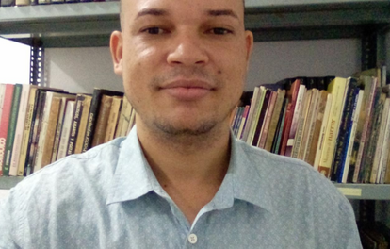

Gerson Adrian Cordero García Nacimiento: 03/04/1991. Lugar: Luperón/ Puerto Plata/ República Dominicana. Lugar de crianza: Barrancón Luperón Puerto Plata. Padres: Carlos Cordero. Maricela García. Carrera: Profesor/ mención Letras. Universidad: Nacional Evangélica UNEV . Género literario: Cuentos, Relatos, Ensayos, Novelas, Críticas, Poesías. Reconocimiento: Premio Nacional de cuentos Unevianos, República Dominicana ( 2019). ( Otorgado por la Universidad Nacional Evangélica UNEV ) Todos los trabajos que se muestran a continuación son trabajos que el autor ha llamado ( Intentos poéticos)
Ernesto Cardenal Martínez (Granada, Nicaragua, 20 de enero de 1925) es un sacerdote católico (uno de los más destacados religiosos de la teología de la liberación), político, escultor y escritor nicaragüense, famoso, ante todo, por su obra poética, que le ha merecido varios premios internacionales. Nacido en una de las familias más respetables del país, tuvo de hogar en su infancia La Casa de los Leones, una notable mansión en Granada, Nicaragua. Su bisabuelo materno era un judío de Polonia. Estudió primero en Managua y de 1942 a 1946, literatura en México. Más tarde, de 1947 a 1949, continúa sus estudios en Nueva York y viaja entre 1949 y 1950 por Italia, España y Suiza. En julio de 1950 vuelve a Nicaragua, donde participa en la Revolución de Abril de 1954 contra Anastasio Somoza García. El golpe de Estado falla y termina con la muerte de muchos de sus compañeros y amigos. Ernesto Cardenal decide entrar en el monasterio de Gethsemani (Kentucky, EE.UU.). En sus memorias, Cardenal afirma que estando en Estados Unidos conoció a Hope Portocarrero, el día en que ésta se graduaba de la universidad. Portocarrero era una joven americana de origen nicaragüense de clase alta, quien era pariente de los Somoza y más tarde sería primera dama de Nicaragua cuando su esposo Anastasio Somoza Debayle llegó al poder. Sin embargo Hope Portocarrero no tuvo interés en tener ningún tipo de relación amistosa con Cardenal. En 1959 abandona el monasterio para estudiar teología en Cuernavaca (México). Cardenal en 1965 es ordenado sacerdote en Managua. Funda en una de las islas Solentiname en el Lago Cocibolca una comunidad cristiana, casi monástica. Ahí se escribe el famoso libro El Evangelio de Solentiname. Cardenal colabora estrechamente con el Frente Sandinista de Liberación Nacional luchando contra el régimen de Somoza. El 19 de julio de 1979, el día de la victoria de la Revolución Nicaragüense, es nombrado ministro de Cultura del nuevo Gobierno del FSLN. Ocupa este cargo hasta 1987, año en el que se cierra el ministerio por razones económicas. Cardenal recibe en 1980 el Premio de la Paz del Comercio Librero Alemán. En 1983, Juan Pablo II visitó oficialmente Nicaragua. El pontífice -frente a cámaras de televisión que transmitían a todo el mundo- amonestó e increpó severamente a Ernesto Cardenal, arrodillado ante él en la misma pista del aeropuerto, por propagar doctrinas apóstatas (según la fe católica) y por formar parte del gobierno sandinista. En 1989 Cardenal funda con el actor austriaco Dietmar Schönherr la Casa de los tres mundos, en Granada, Nicaragua, fundación cultural de la que es presidente honorario. Cardenal abandona el FSLN en 1994, en protesta contra la dirección de Daniel Ortega. Luego, suma su apoyo moral al MRS o Movimiento Renovador Sandinista, y extiende su apoyo a la Alianza Partido MRS, durante las elecciones de 2006, igual que otros destacados literatos nicaragüenses, entre los que destacan Gioconda Belli y Sergio Ramírez Mercado, fundador del MRS. Fue nominado en mayo de 2005 a recibir el Premio Nobel de literatura. Dos meses más tarde, participó en la inauguración de la señal televisiva Telesur, junto a personalidades como Danny Glover, Eduardo Galeano, Pino Solanas y Adolfo Pérez Esquivel, entre otros. En el año 2005, como presidente de la Asociación para el desarrollo de Solentiname, fue premiado con la "foca Mediterrania" en los premios Ones. En el año 2007 el poeta nicaragüense vuelve a México, donde, entre otras actividades, se entrevistió con el Subcomandante Marcos del Ejército Zapatista de Liberación Nacional y participó en el festival XII Encuentro Hispanoamericano de Escritores Horas de Junio, celebrado el 1 de junio. Organizado por la Universidad de Sonora, ese año llevó por título Tributo a Ernesto Cardenal; el poeta lectura de un texto, Polvo de estrellas, sobre la utopía social, así como también un recital de sus poemas que enmudeció al auditorio de la Sociedad Sonorense de Historia. En 2009 obtuvo el Premio Iberoamericano de Poesía Pablo Neruda, que recibió el 27 de julio de manos de la presidenta de Chile, Michelle Bachelet. En abril de 2010, fue elegido miembro correspondiente de la Academia Mexicana de la Lengua. Actualmente es presidente honorífico de la Red Internacional de Escritores por la Tierra (RIET) Poesía Hora 0 (1957) Gethsemani Ky (1960) Epigramas (1961) Salmos (1964) Oración Por Marilyn Monroe y otros poemas (1965) El estrecho dudoso (1966) Mayapán (1968) Homenaje a los indios americanos (1969) Canto nacional (1972) Oráculo sobre Managua (1973) Canto a un país que nace (1978) Tocar el cielo (1981) Vuelos de victoria (1984) Quetzalcúatl (1985) Los ovnis de oro (1988) Cántico Cósmico (1989) El telescopio en la noche oscura (1993) Versos del pluriverso (2005) Pasajero de Transito (2006) Memorias Vida perdida (1999). Seix Barral Los años de Granada (2001) Anama Las ínsulas extrañas (2002). Editorial Trotta La revolución perdida (2004). Editorial Trotta Otros Ansías y lengua de la poesía nueva nicaragüense (1948) Vida en el amor (meditaciones) (1970) En Cuba (1972) Fidel Castro: cristianismo y revolución (1974) El Evangelio en Solentiname (1975) La santidad de la revolución (1976) La batalla de Nicaragüa (1980) La paz mundial y la revolución en Nicaragüa (1981) Democratización de la cultural (1982) Los campesinos de Solentiname pintan el Evangelio (1982) Nostalgia del futuro: pintura y buena noticia en Solentiname (1983) Nuevo cielo y tierra nueva (1985) El río de San Juan: estrecho dudoso en el centro de América (1993) Del monasterio al mundo. Correspondencia (1959-1968) (1998) Referencias Wikipedia - http://es.wikipedia.org/wiki/Ernesto_Cardenal

I've been writing all my life, since I could read and hold a pen. Its only been in the last couple of years that friends and writing colleagues have encouraged me to submit work for publication. Slowly I've been finding success in getting work recognised in magazines and journals and at spoken word events. I'll post here as regularly as I can, posting poems that are new that I like or have achieved some success. I hope the writing engenders some understanding and encouragement #poetatheart
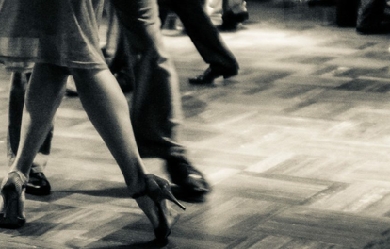
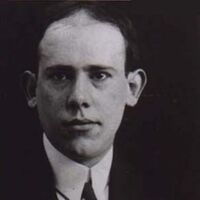
Evaristo Francisco Estanislao Carriego nació en Paraná, provincia de Entre Ríos, Argentina, el 7 de mayo de 1883 y falleció en Buenos Aires el 13 de octubre de 1912. Su familia era de largo arraigo en Entre Ríos, descendientes del sevillano Hernán Mejía de Mirabal (El Bravo), uno de los fundadores de la ciudad de “El Barco”, que luego derivó en Santiago del Estero. Durante su niñez se trasladó junto a su familia al barrio de Palermo en Buenos Aires (Calle Honduras entre Bulnes y Mario Bravo).


The wife of a loving husband. Mother of two beautiful children, girl and boy . I love God, nature and people. I love expressing myself through speech. I've been writing since 2005. My husband is my biggest fan and supporter. God is my inspiration. His love and continuous grace is the theme I love writing about.
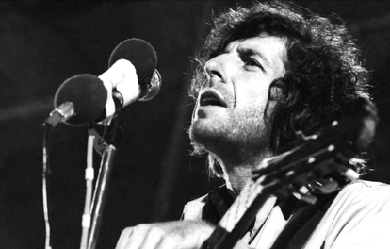
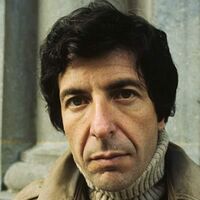
Leonard Norman Cohen (21 September 1934 – 10 November 2016) was a Canadian Juno Award-winning singer-songwriter, musician, poet, and novelist. His work often explores religion, isolation, sexuality, and personal relationships. Cohen has been inducted into the American Rock and Roll Hall of Fame and both the Canadian Music Hall of Fame and the Canadian Songwriters Hall of Fame. He is also a Companion of the Order of Canada, the nation's highest civilian honour. In 2011, Cohen received a Prince of Asturias Award for literature. Cohen's writing process, as he told an interviewer in 1998, is “like a bear stumbling into a beehive or a honey cache: I'm stumbling right into it and getting stuck, and it's delicious and it's horrible and I'm in it and it's not very graceful and it's very awkward and it's very painful and yet there's something inevitable about it”.
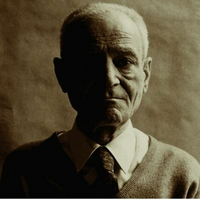
Giorgio Caproni (Livorno, 7 gennaio 1912 – Roma, 22 gennaio 1990) è stato un poeta, critico letterario e traduttore italiano. È probabile che la famiglia Caproni abbia ascendenze germaniche e che un lontano parente, Bartolomeo Caproni, lo zi’ Meo, fosse un “contadino e consulente linguistico” del Pascoli.
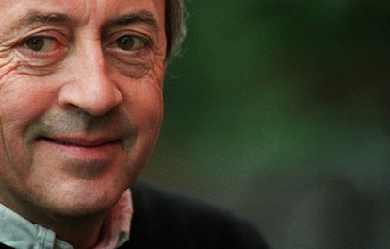
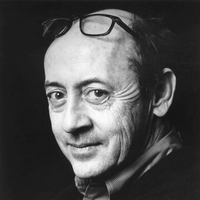
William James “Billy” Collins (born March 22, 1941) is an American poet, appointed as Poet Laureate of the United States from 2001 to 2003. He is a Distinguished Professor at Lehman College of the City University of New York and is the Senior Distinguished Fellow of the Winter Park Institute, Florida. Collins was recognized as a Literary Lion of the New York Public Library (1992) and selected as the New York State Poet for 2004 through 2006. He is (in 2015) a teacher in the MFA program at Stony Brook Southampton. Early years Collins was born in Manhattan to William and Katherine Collins and grew up in Queens and White Plains. Collins was a very late child who parents were both 39 at the time, which was very late back then. William, his dad was from a big family from Ireland and Katherine his mom was from Canada. Katherine Collins was a nurse who stopped working to raise the couple’s only child. Mrs. Collins had the ability to recite verses on almost any subject, which she often did, and cultivated in her young son the love of words, both written and spoken. Billy Collins attended Archbishop Stepinac High School in White Plains and received a B.A. in English from the College of the Holy Cross in 1963; he received his M.A. and Ph.D in Romantic Poetry from the University of California, Riverside. His professors at Riverside included Victorian scholar and poet Robert Peters. In 1975 Collins founded The Mid-Atlantic Review with his friend Walter Blanco and Steve Bailey. As a kid in middle school Collins was writing dark, Gothic-poetry. Collins started to get more into poetry because his dad would bring Poetry magazine home from his work. There he came under the influence of contemporary poets like Karl Shapiro, Howard Nemerov and Reed Whittemore.During his adolescence he was influence by Beat Generation with poems like “Howl”; who were a group of authors around the 50’s after WWII who would write about materialism, human condition and religion. Career Collins is a Distinguished Professor of English at Lehman College in the Bronx, where he joined the faculty in 1968. Additionally, he is a founding Advisory Board member of the CUNY Institute for Irish-American Studies at Lehman College. He also has taught and served as a visiting writer at Sarah Lawrence College in Bronxville, New York as well as teaching workshops across the U.S. and in Ireland. Collins is a member of the faculty of SUNY Stony Brook Southampton, where (2015) he teaches poetry workshops. Collins was named U.S. Poet Laureate in 2001 and held the title until 2003. Collins served as Poet Laureate for the State of New York from 2004 until 2006. Collins enjoyed a stint with the Winter Park Institute in Winter Park, Florida, an affiliate of Rollins College. Named the Senior Distinguished Fellow at the Winter Park Institute, his affiliation that began in 2008 ended in 2015 when the college’s interim president, Craig MacAllaster, emailed Collins saying his contract would not be renewed because of budget issues. Collins invited friends of his to be guests at the Institute, including such luminaries as Pulitzer Prize winners Jules Feiffer and Marsha Norman, Paul Simon, Sir Paul McCartney, and Jane Pauley. In 2012, Collins became Poetry Consultant for Smithsonian Magazine. During the summer of 2013, Collins guest hosted Garrison Keillor’s popular daily radio broadcast, The Writer’s Alamanac, on NPR. Collins has been invited to read at The White House three times—in 2001, 2011, and 2014. In 2014 he traveled to Russia as a cultural emissary of the U.S. State Department. In 2013 and 2015, Collins toured with the singer-songwriter Aimee Mann, performing on stage with her in a music-poetry-conversation format. Collins and Paul Simon have engaged in four onstage conversations about poetry, music, and lyrics, starting in 2008. The conversations were held in 2008 at New York’s 92nd Street Y and The Winter Park Institute, in 2013 at the Chautauqua Institution, and in 2013 at Emory University as part of the Richard Ellman Lectures in Modern Literature, where Simon was the 2013 Richard Ellman Lecturer. Collins presented a TED talk, Everyday moments, caught in time at TED 2012. Collins, as one of the Favorite 100 TED speakers of all time, was invited to give another TED talk at TED 2014 in Vancouver, Canada. As U.S. Poet Laureate, Collins read his poem The Names at a special joint session of the United States Congress on September 6, 2002, held to remember the victims of the 9/11 attacks. Though, unlike their British counterparts, U.S. poets laureate are not asked or expected to write occasional poetry, Collins was asked by the Librarian of Congress to write a poem especially for that event. Collins initially refused to read “The Names” in public, though he has read it two times in public since 2002. He vowed not to include it in any of his books, refusing to capitalize on the 9/11 attacks. However, “The Names” was included in the The Poets Laureate Anthology put out by the Library of Congress, for which Collins wrote the foreword. The only book-published version of “The Names”, it contains a number of regrettable typographical errors. The poem also appeared in the New York Times, September 6, 2002. Collins finally agreed to include “The Names” in his new and selected volume Aimless Love in 2013. As Poet Laureate, Collins instituted the program Poetry 180 for high schools. Collins chose 180 poems for the program and the accompanying book, Poetry 180: A Turning Back to Poetry—one for each day of the school year. Collins edited a second anthology, 180 More Extraordinary Poems for Every Day to refresh the supply of available poems. The program is online, and poems are available there for no charge. In 1997, Collins recorded The Best Cigarette, a collection of 34 of his poems, that would become a bestseller. In 2005, the CD was re-released under a Creative Commons license, allowing free, non-commercial distribution of the recording. He also recorded two of his poems for the audio versions of Garrison Keillor’s collection Good Poems (2002). Collins has appeared on Keillor’s radio show, A Prairie Home Companion, numerous times, where he gained a portion of his large following. In 2005, Collins recorded Billy Collins Live: A Performance in New York City. Collins was introduced by his friend, actor Bill Murray. Billy Collins has been called “The most popular poet in America” by the New York Times. When he moved from the University of Pittsburgh Press to Random House, the advance he received shocked the poetry world—a six-figure sum for a three-book deal, virtually unheard of in poetry. The deal secured for Collins through his literary agent, Chris Calhoun, then of Sterling Lord Literistic, with the editor Daniel Menaker, remained the talk of the poetry world, and indeed the literary world, for quite some time. Over the years, the U.S. magazine Poetry has awarded Collins several prizes in recognition of poems they publish. During the 1990s, Collins won five such prizes. The magazine also selected him as “Poet of the Year” in 1994. In 2005 Collins was the first annual recipient of its Mark Twain Prize for Humor in Poetry. He has received fellowships from the National Endowment for the Arts, the New York Foundation for the Arts and in 1993, from the John Simon Guggenheim Foundation. A major accomplishment of his is in 2002, Collins was asked to write a poem commemorating the first anniversary of the fall of the Twin Towers on September 11. The reading was in front of a joint session of Congress held outside of Washington D.C. One of his most critically acclaimed works, “Fishing on the Susquehanna in July” has been added to the preserved works of the United States Native American literary registry as being deemed a culturally significant poem. The poem has been included on national Advance Placement exams for high school students. In 2012, Collins appeared as himself in an episode of the PBS animated series Martha Speaks. Collins is on the editorial board at The Alaska Quarterly Review. Most recently he contributed to the 30th anniversary edition. He is on the advisory board at the Southern Review, and is similarly named in other journals. Awards and honors 1983 Fellowship from the New York Foundation for the Arts 1986 Fellowship from the National Endowment for the Arts 1991 National Poetry Series publication prize. Winner for Questions About Angels 1992 New York Public Library “Literary Lion” 1993 Fellowship from the John Simon Guggenheim Foundation 1994 Poetry magazine’s “Poet of the Year” 1995 Lenore Marshall Poetry Prize, Academy of American Poets. Shortlist for The Art of Drowning 2001 American Irish Historical Society Cultural Award 2001–2003 United States Poet Laureate 2004–2006 New York State Poet Laureate 2005 Mark Twain Award for Humor in Poetry 2013 Donald Hall-Jane Kenyon Prize in American Poetry 2014 Norman Mailer Prize for Poetry Other Awards include these from Poetry magazine: The Oscar Blumenthal Prize The Bess Hokin Prize The Frederick Bock Prize The Levinson Prize Poetry collections * Pokerface (1977) * Video Poems (1980) * The Apple That Astonished Paris. University of Arkansas Press. 1988. ISBN 978-1-55728-024-4. See also version printed by University of Arkansas Press, 2006, ISBN 978-1-55728-823-3 * The Art of Drowning. University of Pittsburgh Press. 1995. ISBN 978-0-8229-5567-2. * Picnic, Lightning. University of Pittsburgh Press. 1998. ISBN 978-0822956709. * Questions About Angels. University of Pittsburgh Press. 1999. ISBN 978-0822956983. * Taking Off Emily Dickinson’s Clothes. Picador. 2000. ISBN 978-0330376501. * Sailing Alone Around the Room: New and Selected Poems. Random House. 2001–2002. ISBN 978-0-375-75519-4. * Nine Horses. Random House, Inc. 2002. ISBN 978-1-58836-278-0. * The Trouble with Poetry. 2005. ; Random House, Inc., 2007, ISBN 978-0-375-75521-7 * She Was Just Seventeen. Modern Haiku Press. 2006. ISBN 978-0974189420. * Ballistics. 2008. ISBN 978-1-4000-6491-5. * Horoscopes for the Dead. Random House. 2011. ISBN 978-1-4000-6492-2. * Aimless Love. Random House. 2013. ISBN 978-0-6796-4405-7. * Voyage. Bunker Hill Publishing. 2014. ISBN 978-1-59373-154-0. References Wikipedia—https://en.wikipedia.org/wiki/Billy_Collins

the way I write is different , original I created this style and I call it ~Poetic dialect} enjoy !!! Im half Palestinian and half Russian I fall in love often with knowledge,not seduction love to me is about passion not repercussions every day I imagine loving ever lasting if was the case no more I could ask for !! My giving name is Samer i am a personal social visionary ,a self starter inventive business man. intuitive lucrative an crafty. systematically acting rationally,too respectful & very selective individual, I'm also ridiculed for being original, I got charisma no one can copy, yet with a potty mouth I have no proxy! Im sometimes seductive and foxy, never called a softy yet talkative enough to talk a court into a mockery, yet I completed competition to create A monopoly. I have faster self-control like a master. Patience similar to a burning candle! Not demanding with sincere actions but like a ninja I don't like to much attention if that's the case I'm creating a distracting for my quick extracting,I'm speedy with quick reaction when others Are harassing bit of a jokester, but yet a true leader!! Take a minute and observe how I obligate the opposite of toxic, im a true romantic with aspects too dynamic too dissect! Im not arrogant but reasonably confident, honestly loyalty matters most I promise....
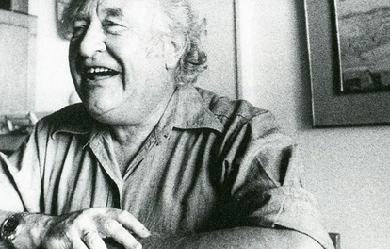
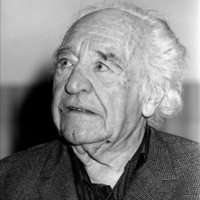
Rafael Gabriel Juan Múgica Celaya Leceta (Hernani, Guipúzcoa, 18 de marzo de 1911 – Madrid, 18 de abril de 1991), conocido como Gabriel Celaya, fue un poeta español de la generación literaria de posguerra. Fue uno de los más destacados representantes de la que se denominó «poesía comprometida». Su nombre completo era Rafael Gabriel Juan Múgica Celaya Leceta, lo que aprovechó para firmar sus obras como Rafael Múgica, Juan de Leceta o Gabriel Celaya. Presionado por su padre, se radicó en Madrid donde inició sus estudios de Ingeniería y trabajó por un tiempo como gerente en la empresa familiar. Entre los años 1927 y 1935 vivió en la Residencia de Estudiantes, donde conoció a Federico García Lorca, José Moreno Villa y a otros intelectuales que lo inclinaron por el campo de la literatura, llevándolo a dedicarse por entero a la poesía. En 1946 fundó en San Sebastián, con su inseparable Amparo Gastón, la colección de poesía «Norte» y desde entonces abandonó su profesión de ingeniería y su cargo en la empresa de su familia. La colección de poesía «Norte» pretendía hacer de puente entre la poesía de la generación de 1927, la del exilio y la europea. Aparecen así, bajo ese sello editorial, traducciones de Rainer María Rilke, Arthur Rimbaud, Paul Éluard o William Blake. En 1946 publica Tentativas, libro en prosa en el que por primera vez firma como Gabriel Celaya. Esta primera etapa es de carácter existencialista. En los años cincuenta se integra en la estética del compromiso (Lo demás es silencio 1952 y Cantos Íberos 1955, verdadera biblia de la poesía social). Junto a Eugenio de Nora y Blas de Otero, defiende la idea de una poesía no elitista, al servicio de las mayorías, "para transformar el mundo": Cantemos como quien respira. Hablemos de lo que cada día nos ocupa. Nada de lo humano debe quedar fuera de nuestra obra En el poema debe haber barro, con perdón de los poetas poetísimos. La Poesía no es un fin en sí. La Poesía es un instrumento, entre otros, para transformar el mundo. En 1956 obtuvo el Premio de la Crítica por su libro «De claro en claro». Cuando este modelo de poesía social entró en crisis, Celaya volvió a sus orígenes poéticos. Publicó La linterna sorda y reeditó poemas anteriores a 1936. También ensayó el experimentalismo y la poesía concreta en Campos semánticos (1971). Entre 1977 y 1980 se publicaron sus Obras Completas en cinco volúmenes. En 1986 es galardonado con el Premio Nacional de las Letras Españolas por el Ministerio de Cultura. Ese mismo año publica "El mundo abierto". En definitiva, la obra de Celaya constituye una gran síntesis de casi todas las preocupaciones y estilos de la poesía española del siglo XX. Falleció el 18 de abril de 1991 en Madrid y sus cenizas fueron esparcidas en su Hernani natal. Obras * Marea del silencio (1935) * La soledad cerrada (1947) * Movimientos elementales (1947) * Tranquilamente hablando (1947) (firmado como Juan de Leceta) * Las cosas como son (1949) * Las cartas boca arriba (1951) * Lo demás es silencio (1952) * Cantos Íberos (1955) * Campos semánticos (1971) * Itinerario poética (1973) Referencias http://es.wikipedia.org/wiki/Gabriel_Celaya
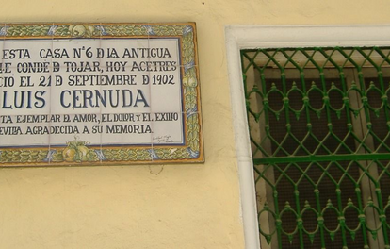
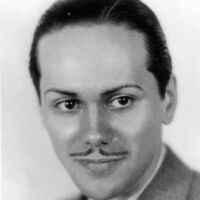
Luis Cernuda Bidón (Sevilla, 21 de septiembre de 1902 – México, D.F., 5 de noviembre de 1963) fue un destacado poeta y crítico literario español, miembro de la llamada Generación del 27. Su educación fue rígida e intransigente debido al carácter y a la condición militar de su padre. Con motivo de la traslación de los restos de Bécquer a los nueve años de su edad, empieza a leer poesía y, más tarde, un profesor lo anima a escribir versos y le corrige los que compone. Empieza a estudiar Derecho en la Universidad de Sevilla en 1919, siendo uno de sus profesores Pedro Salinas, quien lo ayudó con sus primeras publicaciones. Al año siguiente fallece su padre. En 1923 deja la Universidad de Sevilla para hacer el servicio militar e ingresa en el Regimiento de Caballería de Sevilla. En 1924 volvió para terminar la carrera, lo que consiguió en 1926. Asiste con Higinio Capote y Joaquín Romero Murube a las tertulias literarias organizadas por Salinas, lee a los clásicos españoles y a autores franceses, especialmente André Gide, que supone para él una revelación. En 1925 conoce a Juan Ramón Jiménez y publica sus primeros poemas en Revista de Occidente. En 1926 viaja a Madrid; colabora en La Verdad, Mediodía y Litoral, esta última la revista malagueña del matrimonio formado por Manuel Altolaguirre y Concha Méndez, a los que siempre le unirá una gran amistad, incluso en el exilio mexicano. Lee a los surrealistas franceses, y le influyen en especial Pierre Reverdy y Paul Éluard; a este último lo traducirá más tarde. En 1927 publica su primer libro lírico, Perfil del aire en la imprenta malagueña de Prados y Altolaguirre, pero es atacado por Juan Ramón Jiménez, quien considera a este libro demasiado influido por Jorge Guillén; esto no se lo perdonará nunca Luis Cernuda. En diciembre asiste a los actos celebrados en el Ateneo de Sevilla con motivo del tercer centenario de la muerte de Góngora, pero sólo como oyente, aunque ya había conocido a varios miembros de la que sería denominada después Generación de 1927. En 1928 fallece su madre, visita a sus amigos malagueños (Altolaguirre, Prados, Méndez e Hinojosa); marcha a Madrid, donde conoce a Vicente Aleixandre; en noviembre Salinas le ayuda a conseguir un lectorado de español en la Universidad de Toulouse; viaja también a París, donde se aficiona al cine. Se traslada luego a Madrid en 1929 y allí, desde 1930, trabaja en la librería de León Sánchez Cuesta; asiste a diversas tertulias en compañía de Vicente Aleixandre y de Federico García Lorca; este último le presenta (1931) a un joven actor gallego llamado Serafín Fernández Ferro y Cernuda se enamora de él; pero este no le corresponde sino sólo cuando necesita dinero; este amor insatisfecho inspirará sus libros Donde habite el olvido y Los placeres prohibidos. Gerardo Diego lo incluye en su Antología (1932) y, concluida su relación con Serafín, Cernuda se involucra en el proyecto de las Misiones pedagógicas, primero en la sección Bibliotecas y luego en el Museo ambulante; con ellos recorre los pueblos de Castilla y Andalucía y conoce a Ramón Gaya y al pintor Gregorio Prieto; colabora además en la revista Octubre de Rafael Alberti (1933). Al año siguiente publica Donde habite el olvido y empieza a leer a los poetas del Romanticismo europeo; visita otra vez Málaga. Colabora en la revista Cruz y Raya de José Bergamín y publica en ella sus traducciones de Hölderlin (1934). En 1936, poco antes de estallar la Guerra Civil, interviene en el homenaje a Valle-Inclán y publica la primera edición de su obra poética completa hasta entonces, bajo el título de La realidad y el deseo. Se entera del asesinato de Federico García Lorca y le escribe una sentida elegía, "A un poeta muerto (F. G. L.)", cuyos dos últimos párrafos fueron censurados. Pasó dos meses como agregado de la Embajada Española en París y vuelve a Madrid, donde se alista en el Batallón Alpino; con él es enviado a la Sierra de Guadarrama. En abril de 1937 se traslada a Valencia, donde colabora con Hora de España y publica la citada elegía a Lorca; participa allí en el II Congreso de Intelectuales Antifascistas de Valencia, donde conoce a Octavio Paz, a quien volverá a ver más adelante en México. En el verano interpreta el papel de Don Pedro en la representación de Mariana Pineda dirigida por Altolaguirre. En 1938 parte al Reino Unido a dar un ciclo de conferencias y conoce a Rafael Martínez Nadal, quien será luego uno de sus estudiosos. En Oxfordshire ejerce de tutor de niños vascos refugiados, lo que le inspira el poema «Niño muerto»; luego trabaja como profesor en el internado Cranleigh School. Lee a los clásicos ingleses, en especial a los poetas metafísicos y a T. S. Eliot, pero también a Constantino Cavafis. Trabaja como lector de español en la Universidad de Glasgow, la Universidad de Cambridge (1943) y el Instituto Español de Londres (1945), pasando los veranos en Oxford en compañía del pintor Gregorio Prieto. Termina Las nubes y escribe los poemas en prosa de Ocnos. En 1944 un nuevo amor le inspira los poemas de Vivir sin estar viviendo y desarrolla una intensa labor de crítico literario, publicando en el Bulletin of Hispanic Studies varios ensayos sobre poesía española; traduce Troilo y Cresida de Shakespeare (1945). En 1947 se inicia su exilio norteamericano; allí enseña literatura en el colegio de señoritas de Mount Holyoke (Massachusetts), puesto que desempeñará hasta 1952, y logra por fin la ansiada estabilidad económica; tres viajes a México en 1949, 1950 y 1951 le hacen desear volver a vivir en una tierra donde se habla el español, en compañía del amplio exilio republicano refugiado allí gracias a la hospitalidad del presidente Lázaro Cárdenas. En 1951 es invitado por la revista Orígenes para dar conferencias en Cuba y amista con el escritor Lezama Lima; además se reencuentra con María Zambrano. Por fin consigue dejar su puesto y establecerse en México capital en 1952; allí se enamora de un culturista, Salvador Alighieri, que había conocido en las vacaciones de 1951; a él están dedicados los Poemas para un cuerpo. En México vuelve a ver a Octavio Paz y a los Altolaguirre, en especial a su mujer, Concha Méndez, con la que pasa una temporada en 1953 en Coyoacán. Desde 1954 trabaja en la Universidad Nacional Autónoma de México como profesor por horas e investiga con una beca de El Colegio de México; colabora en diversas revistas mexicanas. En 1955 su figura es reivindicada en España por un grupo de jóvenes poetas cordobeses, el Grupo Cántico, lo que supone para él una gran satisfacción; en 1956 emprende la redacción de los primeros poemas de Desolación de la Quimera y en 1957 se imprimen los Poemas para un cuerpo y sus Estudios sobre poesía española contemporánea. Publica en México en la Cultura su biografía literaria, «Historial de un libro», con motivo de la tercera edición revisada y ampliada de La realidad y el deseo (1958). En 1959, con motivo del fallecimiento de Manuel Altolaguirre, se ocupa de editar las Poesías completas de su amigo y empieza a mantener correspondencia con jóvenes poetas españoles. En 1960 Carlos Barral le publica en Barcelona los ensayos contenidos en las dos partes de Poesía y literatura y en verano imparte un curso en la Universidad de California en Los Ángeles; entre 1961 y 1962 es profesor visitante en San Francisco y en este último año se publica en México Desolación de la Quimera; entre 1962 y 1963 vuelve a impartir un curso en Los Ángeles y el 5 de noviembre fallece en la Ciudad de México y es enterrado pocos días después en la sección española del Panteón Jardín. Nunca negó su condición homosexual, factor que le hizo ser considerado en su patria un «raro» y rebelde, dada la mentalidad poco abierta de la España de entonces, «un país donde todo nace muerto, vive muerto y muere muerto», como dirá en Desolación de la Quimera. La consciencia de su aislamiento se expresa en una de sus imágenes más conocidas: Cernuda se ve a sí mismo «como naipe cuya baraja se ha perdido». Poesía La poesía cernudiana es una poesía de la meditación, y consta de cuatro etapas, según Octavio Paz: los años de aprendizaje, la juventud, la madurez y el comienzo de la vejez. A la etapa inicial pertenecen las primeras poesías, publicadas en 1927 con el título de Perfil del aire —que muestran a un poeta elegante en su contemplación elegíaca del mundo— y Égloga, elegía, oda, escrito entre 1927 y 1928, que rinde homenaje a la tradición clásica a la vez que toca algunos temas muy cernudianos: amor y eros en especial. Comienza el ciclo de la juventud con Un río, un amor y Los placeres prohibidos, escritos entre 1929 y 1931. Esos dos libros revelan la adhesión de Cernuda al surrealismo. Aunque el clasicista que siempre hubo en él atempera muchas veces la ruptura formal, lo esencial de esos poemarios es su espíritu de rebeldía contra el orden establecido. En Los placeres prohibidos la rebelión crece con la abierta reivindicación de la homosexualidad. Donde habite el olvido (1934) es un libro neorromántico, «superbecqueriano», que desarrolla una elegía amorosa. Invocaciones, de 1934–1935, presenta al neorromántico dilatándose en amplios poemas que celebran las glorias del mundo y exaltan la misión del poeta. El período de madurez arranca con Las nubes (1940 y 1943), uno de los más bellos libros de poesía sobre la Guerra Civil, donde lo elegíaco alcanza su plenitud. Bajo el estímulo de la lírica inglesa, incluye monólogos dramáticos, como «La adoración de los magos». Prolonga tono y estilo en Como quien espera el alba (1947). Obsesionado con sus recuerdos sevillanos, elabora en prosa Ocnos (1ª ed. en 1942, luego ampliada: 1949 y 1963), esencial para entender su mitología del Edén perdido. En México se desarrolla su última etapa. Allí compondría Variaciones sobre tema mexicano (1952), Vivir sin estar viviendo (1944–1949) y Con las horas contadas, de 1950–1956, que en ediciones posteriores incorporará Poemas para un cuerpo (Málaga, 1957). Es perceptible la sustitución de la anterior musicalidad elegante, garcilasiana, por un ritmo seco, duro, y por la renuncia a toda ornamentación en favor del concepto. Este estilo alcanza su plenitud en Desolación de la Quimera (1962). Cernuda es autor de una obra crítica (Estudios sobre poesía española contemporánea, 1957, o Poesía y literatura, I y II, 1960 y 1964) que, más allá de algunas arbitrariedades, ha permitido revisar tópicos y estimaciones. En ella, Cernuda reivindica a Campoamor, expresa su admiración por su amigo Federico García Lorca y enjuicia con severidad la obra de Rubén Darío, Juan Ramón Jiménez, Pedro Salinas y Jorge Guillén. En 1985 se editó su única obra de teatro, La familia interrumpida. Teoría poética Fue el propio Luis Cernuda quien esbozó su evolución poética en «Historial de un libro», trabajo publicado primitivamente en Papeles de son Armadans y recogido posteriormente en su Poesía y literatura. Toda crítica literaria de su obra ha de referirse necesariamente a este trabajo del autor. Tradición y originalidad Para Cernuda, el respeto a la tradición literaria y la aportación de originalidad en su obra deben ir en perfecto equilibrio. No se debe dar mayor peso a una o a otra. Para él, el respeto a la tradición es algo fundamental, pero no entiende esa tradición solamente como el respeto a la obra de autores españoles, sino que abarca el conjunto de la literatura europea desde Homero. Entre las presencias de la tradición que más claramente se ven en sus poemas encontramos: * Garcilaso. Tanto por su métrica (como se ve en el libro Égloga. Elegía. Oda), como por sus temas (el amor, la visión idealizada de la naturaleza y la presencia de la mitología clásica). * Bécquer, y los poetas que inician el Simbolismo (Baudelaire, Paul Verlaine, Paul Valéry, Mallarmé, Friedrich Hölderlin[cita requerida]) , que le aportan el concepto del poeta como un ser sobrenatural que tiene la capacidad de percibir lo que otros no pueden. * Los poetas platónicos (Fray Luis de León, T.S. Eliot[cita requerida]), le aportan la visión de la naturaleza como un mundo de orden y paz, frente al caos humano. * En Historial de un libro señala asimismo el influjo que ejercieron sobre él la poesía de los poetas metafísicos ingleses, la de Hölderlin y la de Constantino Kavafis. Junto a todas estas presencias de la tradición cultural europea, Cernuda también tendrá en cuenta la obra de sus contemporáneos: * Juan Ramón Jiménez, por la visión subjetiva de la realidad y por la idea de que la verdadera literatura es aquella que se dirige a la esencia de las cosas, eliminando la superficialidad. * Los poetas del 27 le enseñan a enfrentarse a la obra literaria desde la perspectiva del Surrealismo. En la poesía de Cernuda, en fin, la presencia de la tradición se conjugará con la originalidad de su aportación, fruto de sus peculiaridades biográficas. La función del poeta La función del poeta en la obra de Luis Cernuda entronca perfectamente con la tradición romántica, según la cual el artista aparece como un ser solitario dotado de un don sobrenatural que le permite ver y expresar lo que otros no pueden. En esta línea, Cernuda se nos presenta como un integrante de una tradición que arranca con los románticos, sobre todo con los alemanes como Hölderlin, Novalis o Heinrich Heine y que en España representa la figura de otro sevillano, Gustavo Adolfo Bécquer. El poeta es, por tanto, un «elegido», bien sea por Dios o por el Demonio. Es un ser maldito, marginado por la sociedad, hecho del que deriva su soledad total. En el caso de Cernuda, esa condición de maldito, de diferente, viene reforzada por su forma distinta de entender el amor. Su homosexualidad choca frontalmente con los usos y las normas propias de la sociedad burguesa a la que pertenece y en la que vive. Como consecuencia del sentimiento de la diferencia, la actitud del poeta sevillano frente al mundo se definirá por la rebeldía y por el sentimiento de frustración provocado por el choque constante entre la realidad que vive y el deseo de vivir, de amar, de forma diferente. Los temas de la obra poética El núcleo temático de la obra de Cernuda es la antítesis entre la realidad y el deseo, hecho que explica que a partir de 1936 titulara el conjunto de su poesía con esta oposición. Esta antítesis nace, sin duda, de las peculiares circunstancias vitales del poeta sevillano, pero entronca perfectamente con lo que en los poetas románticos y simbolistas era la colisión entre la libertad individual y la sociedad burguesa, además de ser un tema característico de la poesía del siglo XX, como lo demuestra su aparición en poemas de autores muy variados, desde Antonio Machado, a Federico García Lorca, pasando por Rafael Alberti, por citar solamente a algunos contemporáneos de Cernuda. El tema de la realidad frente al deseo podemos concretarlo en la obra de Cernuda en una serie de motivos temáticos recurrentes: * Soledad, aislamiento, marginación y sentimiento de la diferencia. * Deseo de encontrar un mundo habitable que no reprima ni ataque al individuo que se siente y se sabe diferente. En el intento por encontrar ese mundo habitable deseado, a veces el poeta se dirige al pasado, a la niñez, con lo que enlazamos con el tema de los «paraísos perdidos», tan característico de la literatura contemporánea. * Deseo de encontrar la belleza perfecta, que no esté ensuciada por la realidad, por la materialidad. * El amor, como el gran tema cernudiano. Este motivo adopta distintos planteamientos a lo largo de su obra que podemos reducir a cuatro momentos: Un amor no disfrutado, pero presentido. Entendido más como experiencia literaria, leída. Es lo que encontramos, principalmente, en el libro Los placeres prohibidos. La experiencia amorosa marcada por la insatisfacción, por el dolor y el fracaso, por la incomprensión. Lo podemos encontrar, principalmente, en el libro Donde habite el olvido. El amor como experiencia feliz, exaltada, pero marcada por la brevedad. Así lo leemos en los Poemas del cuerpo. El tiempo y su discurrir es otro de los grandes temas del poeta sevillano. Vinculados a este motivo temático encontraremos el deseo de juventud eterna, marcada por las experiencias amorosas, por la belleza y por la fuerza de espíritu que le permite mantener una actitud rebelde frente al mundo que le oprime; la nostalgia de la infancia, asociada a la ingenuidad y, por ello, a la felicidad y el deseo de eternidad, de llegar a fundirse con la Naturaleza en un universo perfectamente ordenado. * La naturaleza. Es clara la oposición que se produce en los poemas de Cernuda entre el mundo burgués, contra el que el poeta reacciona de maneras diversas, y el mundo natural, considerado como un paraíso en el que el artista puede vivir en perfecta armonía. Ese mundo social burgués viene marcado por el caos, es la realidad, y frente a él, el orden natural, el deseo. Esa naturaleza cernudiana viene dominada por la espontaneidad y por la proyección libre de los sentimientos y los instintos que en el ámbito burgués deben ser reprimidos. Referencias wikipedia - http://es.wikipedia.org/wiki/Luis Cernuda
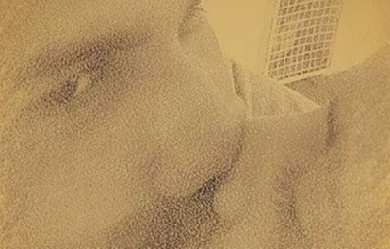
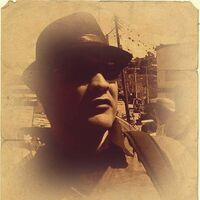
Oscar René Carvajal Galán, nacido en Piedecuesta/Santander/Colombia, un 9 de Septiembre, culminé mis estudios de básica primaria en la escuela pública Gabriela Mistral de Floridablanca/Santander y posteriormente el bachillerato en el colegio ITIZ en Zapatoca/Santander, mayor de dos hermanos; licenciado en lengua castellana y comunicación de la universidad de Pamplona (Norte de Santander, Especialista en Psicopedagogía Especial de la Universidad Manuela Beltrán.
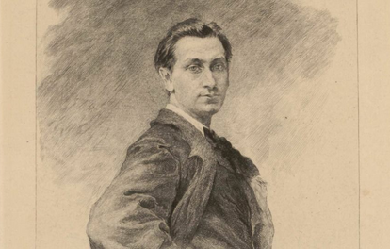
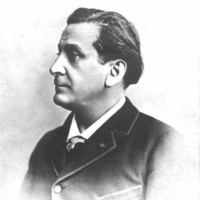
François Édouard Joachim Coppée, né le 26 janvier 1842 à Paris1 où il est mort le 23 mai 1908, est un poète, dramaturge et romancier français. Coppée fut le poète populaire et sentimental de Paris et de ses faubourgs, des tableaux de rue intimistes du monde des humbles. Poète de la tristesse à la vue des oiseaux qui meurent en hiver (La Mort des oiseaux), du souvenir d'une première rencontre amoureuse (« Septembre, au ciel léger »), de la nostalgie d'une autre existence (« Je suis un pâle enfant du vieux Paris ») ou de la beauté du crépuscule (« Le crépuscule est triste et doux »), il rencontra un grand succès populaire. Biographie Il naît à Paris au 2, rue de l'Abbé-Grégoire. Son père était un fonctionnaire et il eut une mère très attentive. Après être passé par le lycée Saint-Louis il devint employé de bureau au ministère de la Guerre et s'attira bientôt les faveurs du public comme poète de l'école parnassienne. Ses premiers vers imprimés datent de 1864. Ils furent réédités avec d'autres en 1866 sous la forme d’un recueil (Le Reliquaire), suivi (1867) par Intimités et Poèmes modernes (1867-1869). En 1869 sa première pièce, Le Passant, fut reçue avec un grand succès au théâtre de l’Odéon et par la suite Fais ce que dois (1871) et Les Bijoux de la délivrance (1872), courts drames en vers inspirés par la guerre, furent chaleureusement applaudis. Son poème le Défilé fut dédié à sa sœur Annette en 1869. Après avoir occupé un emploi à la bibliothèque du Sénat, Coppée fut choisi en 1878 comme archiviste de la Comédie Française, poste qu'il assuma jusqu'en 1884. Cette année-là, son élection à l'Académie française l’amena à se retirer de toutes les charges publiques. Il continua à publier à intervalles rapprochés des volumes de poésie, parmi eux Les Humbles (1872), Le Cahier rouge (1874), Olivier (1875), L'Exilée (1876), Contes en vers etc. (1881), Poèmes et récits (1886), Arrière-saison (1887), Paroles sincères (1890). Dans ses dernières années, il produisit moins de poésie, mais publia encore deux volumes, Dans la prière et la lutte et Vers français. Il avait acquis la réputation d’être le poète des humbles. Outre les pièces mentionnées ci-dessus, deux autres écrites en collaboration avec Armand d'Artois et quelques petites pièces d'importance mineure, Coppée écrivit Madame de Maintenon (1881), Severo Torelli (1883), Les Jacobites (1885) et d'autres drames sérieux en vers, dont Pour la couronne (1895), qui fut traduit en anglais (For the Crown) par John Davidson et représenté au Lyceum Theatre en 1896. La représentation d'un bref épisode de la Commune, Le Pater, fut interdite par le gouvernement (1889). Le premier récit en prose de Coppée, Une idylle pendant le siège, parut en 1875. Il fut suivi par différents volumes de nouvelles, par Toute une jeunesse (1890) où il essayait de reproduire les sentiments, sinon les souhaits réels, de la jeunesse de l'auteur, Les Vrais Riches (1892), Le Coupable (1896), etc. Il fut fait officier de la Légion d'honneur en 1888. La réimpression d’une série d'articles brefs sur des sujets divers, intitulée Mon franc-parler, parut de 1893 à 1896 ; en 1898 vint La Bonne Souffrance, le résultat de son retour à l'Église catholique, qui lui valut une grande popularité. La cause immédiate de son retour à la foi fut une grave maladie qui le fit deux fois approcher de la mort. Jusqu’alors il avait manifesté peu d'intérêt pour les affaires publiques, mais il rejoignit la section la plus exaltée du mouvement nationaliste, en même temps qu’il continuait à mépriser le système de la démocratie. Il prit une part importante aux attaques contre l’accusé dans l'affaire Dreyfus et fut un des créateurs de la fameuse Ligue de la patrie française fondée par Jules Lemaitre et sa maîtresse, Madame de Loynes et où il retrouve un ami, Paul Bourget, déjà croisé lors des dîners des Vilains Bonshommes et dont il est parrain lorsque ce dernier entre à l'Académie française. Il mourut à Paris au 12, rue Oudinot et fut inhumé au cimetière du Montparnasse. Les références Wikipedia – https://fr.wikipedia.org/wiki/François_Coppée
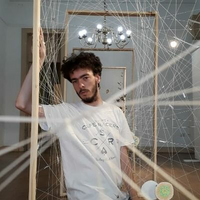
Nací el 8 de septiembre del 2000, en Comodoro Rivadavia, Argentina. Descubrí la poesía a mis 17 años, y puedo decir con seguridad, que nunca nos separaremos. Actualmente estoy cursando la carrera de Letras en la Universidad Nacional de Río Cuarto, y estudiando Tarot y Astrología de manera autodidacta.
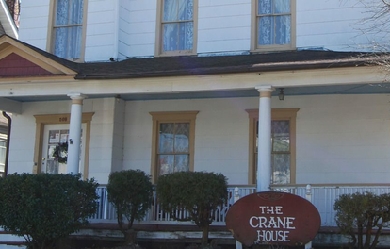
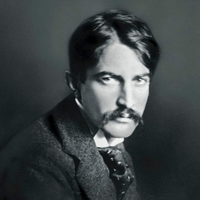
Stephen Crane (November 1, 1871– June 5, 1900) was an American poet, novelist, and short story writer. Prolific throughout his short life, he wrote notable works in the Realist tradition as well as early examples of American Naturalism and Impressionism. He is recognized by modern critics as one of the most innovative writers of his generation. The ninth surviving child of Protestant Methodist parents, Crane began writing at the age of four and had published several articles by the age of 16. Having little interest in university studies, he left college in 1891 to work as a reporter and writer. Crane’s first novel was the 1893 Bowery tale Maggie: A Girl of the Streets, generally considered by critics to be the first work of American literary Naturalism. He won international acclaim in 1895 for his Civil War novel The Red Badge of Courage, which he wrote without having any battle experience. In 1896, Crane endured a highly publicized scandal after appearing as a witness in the trial of a suspected prostitute, an acquaintance named Dora Clark. Late that year he accepted an offer to travel to Cuba as a war correspondent. As he waited in Jacksonville, Florida, for passage, he met Cora Taylor, with whom he began a lasting relationship. En route to Cuba, Crane’s vessel the SS Commodore, sank off the coast of Florida, leaving him and others adrift for 30 hours in a dinghy. Crane described the ordeal in “The Open Boat”. During the final years of his life, he covered conflicts in Greece (accompanied by Cora, recognized as the first woman war correspondent) and later lived in England with her. He was befriended by writers such as Joseph Conrad and H. G. Wells. Plagued by financial difficulties and ill health, Crane died of tuberculosis in a Black Forest sanatorium in Germany at the age of 28. At the time of his death, Crane was considered an important figure in American literature. After he was nearly forgotten for two decades, critics revived interest in his life and work. Crane’s writing is characterized by vivid intensity, distinctive dialects, and irony. Common themes involve fear, spiritual crises and social isolation. Although recognized primarily for The Red Badge of Courage, which has become an American classic, Crane is also known for his poetry, journalism, and short stories such as “The Open Boat”, “The Blue Hotel”, “The Bride Comes to Yellow Sky”, and The Monster. His writing made a deep impression on 20th-century writers, most prominent among them Ernest Hemingway, and is thought to have inspired the Modernists and the Imagists. Biography Early years Stephen Crane was born on November 1, 1871, in Newark, New Jersey, to Jonathan Townley Crane, a minister in the Methodist Episcopal church, and Mary Helen Peck Crane, daughter of a clergyman, George Peck. He was the fourteenth and last child born to the couple. At 45, Helen Crane had suffered the early deaths of her previous four children, each of whom died within one year of birth. Nicknamed “Stevie” by the family, he joined eight surviving brothers and sisters—Mary Helen, George Peck, Jonathan Townley, William Howe, Agnes Elizabeth, Edmund Byran, Wilbur Fiske, and Luther. The Cranes were descended from Jaspar Crane, a founder of New Haven Colony, who had migrated there from England in 1639. Stephen was named for a putative founder of Elizabethtown, New Jersey, who had, according to family tradition, come from England or Wales in 1665, as well as his great-great-grandfather Stephen Crane (1709–1780), a Revolutionary War patriot who served as New Jersey delegate to the First Continental Congress in Philadelphia. Crane later wrote that his father, Dr. Crane, “was a great, fine, simple mind,” who had written numerous tracts on theology. Although his mother was a popular spokeswoman for the Woman’s Christian Temperance Union and a highly religious woman, Crane wrote that he did not believe “she was as narrow as most of her friends or family.” The young Stephen was raised primarily by his sister Agnes, who was 15 years his senior. The family moved to Port Jervis, New York, in 1876, where Dr. Crane became the pastor of Drew Methodist Church, a position that he retained until his death. As a child, Stephen was often sickly and afflicted by constant colds. When the boy was almost two, his father wrote in his diary that his youngest son became “so sick that we are anxious about him.” Despite his fragile nature, Crane was an intelligent child who taught himself to read before the age of four. His first known inquiry, recorded by his father, dealt with writing; at the age of three, while imitating his brother Townley’s writing, he asked his mother, “how do you spell O?” In December 1879, Crane wrote a poem about wanting a dog for Christmas. Entitled “I’d Rather Have –”, it is his first surviving poem. Stephen was not regularly enrolled in school until January 1880, but he had no difficulty in completing two grades in six weeks. Recalling this feat, he wrote that it “sounds like the lie of a fond mother at a teaparty, but I do remember that I got ahead very fast and that father was very pleased with me.” Dr. Crane died on February 16, 1880, at the age of 60; Stephen was eight years old. Some 1,400 people mourned Dr. Crane at his funeral, more than double the size of his congregation. After her husband’s death, Mrs. Crane moved to Roseville, near Newark, leaving Stephen in the care of his older brother Edmund, with whom the young boy lived with cousins in Sussex County. He next lived with his brother William, a lawyer, in Port Jervis for several years. His older sister Helen took him to Asbury Park to be with their brother Townley and his wife, Fannie. Townley was a professional journalist; he headed the Long Branch department of both the New-York Tribune and the Associated Press, and also served as editor of the Asbury Park Shore Press. Agnes, another Crane sister, joined the siblings in New Jersey. She took a position at Asbury Park’s intermediate school and moved in with Helen to care for the young Stephen. Within a couple of years, the Crane family suffered more losses. First, Townley and his wife lost their two young children. His wife Fannie died of Bright’s disease in November 1883. Agnes Crane became ill and died on June 10, 1884, of meningitis at the age of 28. Schooling Crane wrote his first known story, “Uncle Jake and the Bell Handle”, when he was 14. In late 1885, he enrolled at Pennington Seminary, a ministry-focused coeducational boarding school 7 miles (11 km) north of Trenton. His father had been principal there from 1849 to 1858. Soon after her youngest son left for school, Mrs. Crane began suffering what the Asbury Park Shore Press reported as “a temporary aberration of the mind.” She had apparently recovered by early 1886, but later that year, her son, 23-year-old Luther Crane, died after falling in front of an oncoming train while working as a flagman for the Erie Railroad. It was the fourth death in six years among Stephen’s immediate family. After two years, Crane left Pennington for Claverack College, a quasi-military school. He later looked back on his time at Claverack as “the happiest period of my life although I was not aware of it.” A classmate remembered him as a highly literate but erratic student, lucky to pass examinations in math and science, and yet “far in advance of his fellow students in his knowledge of History and Literature”, his favorite subjects. While he held an impressive record on the drill field and baseball diamond, Crane generally did not excel in the classroom. Not having a middle name, as was customary among other students, he took to signing his name “Stephen T. Crane” in order “to win recognition as a regular fellow”. Crane was seen as friendly, but also moody and rebellious. He sometimes skipped class in order to play baseball, a game in which he starred as catcher. He was also greatly interested in the school’s military training program. He rose rapidly in the ranks of the student battalion. One classmate described him as “indeed physically attractive without being handsome”, but he was aloof, reserved and not generally popular at Claverack. Although academically weak, Crane gained experience at Claverack that provided background (and likely some anecdotes from the Civil War veterans on the staff) that proved useful when he came to write The Red Badge of Courage. In mid-1888, Crane became his brother Townley’s assistant at a New Jersey shore news bureau, working there every summer until 1892. Crane’s first publication under his byline was an article on the explorer Henry M. Stanley’s famous quest to find the Scottish missionary David Livingstone in Africa. It appeared in the February 1890 Claverack College Vidette. Within a few months, Crane was persuaded by his family to forgo a military career and transfer to Lafayette College in Easton, Pennsylvania, in order to pursue a mining engineering degree. He registered at Lafayette on September 12, and promptly became involved in extracurricular activities; he took up baseball again and joined the largest fraternity, Delta Upsilon. He also joined both rival literary societies, named for (George) Washington and (Benjamin) Franklin. Crane infrequently attended classes and ended the semester with grades for four of the seven courses he had taken. After one semester, Crane transferred to Syracuse University, where he enrolled as a non-degree candidate in the College of Liberal Arts. He roomed in the Delta Upsilon fraternity house and joined the baseball team. Attending just one class (English Literature) during the middle trimester, he remained in residence while taking no courses in the third trimester. Concentrating on his writing, Crane began to experiment with tone and style while trying out different subjects. He published his fictional story, “Great Bugs of Onondaga,” simultaneously in the Syracuse Daily Standard and the New York Tribune. Declaring college “a waste of time”, Crane decided to become a full-time writer and reporter. He attended a Delta Upsilon chapter meeting on June 12, 1891, but shortly afterward left college for good. Full-time writer In the summer of 1891, Crane often camped with friends in the nearby area of Sullivan County, New York, where his brother Edmund owned a house. He used this area as the geographic setting for several short stories, which were posthumously published in a collection under the title Stephen Crane: Sullivan County Tales and Sketches. Crane showed two of these works to Tribune editor Willis Fletcher Johnson, a friend of the family, who accepted them for the publication. “Hunting Wild Dogs” and “The Last of the Mohicans” were the first of fourteen unsigned Sullivan County sketches and tales that were published in the Tribune between February and July 1892. Crane also showed Johnson an early draft of his first novel, Maggie: A Girl of the Streets. Later that summer, Crane met and befriended author Hamlin Garland, who had been lecturing locally on American literature and the expressive arts; on August 17 he gave a talk on novelist William Dean Howells, which Crane wrote up for the Tribune. Garland became a mentor for and champion of the young writer, whose intellectual honesty impressed him. Their relationship suffered in later years, however, because Garland disapproved of Crane’s alleged immorality, related to his living with a woman married to another man. Stephen moved into his brother Edmund’s house in Lakeview, a suburb of Paterson, New Jersey, in the fall of 1891. From here he made frequent trips into New York City, writing and reporting particularly on its impoverished tenement districts. Crane focused particularly on The Bowery, a small and once prosperous neighborhood in the southern part of Manhattan. After the Civil War, Bowery shops and mansions had given way to saloons, dance halls, brothels and flophouses, all of which Crane frequented. He later said he did so for research. He was attracted to the human nature found in the slums, considering it “open and plain, with nothing hidden”. Believing nothing honest and unsentimental had been written about the Bowery, Crane became determined to do so himself; this was the setting of his first novel. On December 7, 1891, Crane’s mother died at the age of 64, and the 20-year-old appointed Edmund as his guardian. Despite being frail, undernourished and suffering from a hacking cough, which did not prevent him from smoking cigarettes, in the spring of 1892 Crane began a romance with Lily Brandon Munroe, a married woman who was estranged from her husband. Although Munroe later said Crane “was not a handsome man”, she admired his “remarkable almond-shaped gray eyes.” He begged her to elope with him, but her family opposed the match because Crane lacked money and prospects, and she declined. Their last meeting likely occurred in April 1898, when he again asked her to run away with him and she again refused. Between July 2 and September 11, 1892, Crane published at least ten news reports on Asbury Park affairs. Although a Tribune colleague stated that Crane “was not highly distinguished above any other boy of twenty who had gained a reputation for saying and writing bright things,” that summer his reporting took on a more skeptical, hypocrisy-deflating tone. A storm of controversy erupted over a report he wrote on the Junior Order of United American Mechanics’ American Day Parade, entitled “Parades and Entertainments”. Published on August 21, the report juxtaposes the “bronzed, slope-shouldered, uncouth” marching men “begrimed with dust” and the spectators dressed in “summer gowns, lace parasols, tennis trousers, straw hats and indifferent smiles”. Believing they were being ridiculed, some JOUAM marchers were outraged and wrote to the editor. The owner of the Tribune, Whitelaw Reid, was that year’s Republican vice-presidential candidate, and this likely increased the sensitivity of the paper’s management to the issue. Although Townley wrote a piece for the Asbury Park Daily Press in his brother’s defense, the Tribune quickly apologized to its readers, calling Stephen Crane’s piece “a bit of random correspondence, passed inadvertently by the copy editor”. Hamlin Garland and biographer John Barry attested that Crane told them he had been dismissed by the Tribune, although Willis Fletcher Johnson later denied this. The paper did not publish any of Crane’s work after 1892. Life in New York Crane struggled to make a living as a free-lance writer, contributing sketches and feature articles to various New York newspapers. In October 1892, he moved into a rooming house in Manhattan whose boarders were a group of medical students. During this time, he expanded or entirely reworked Maggie: A Girl of the Streets, which is about a girl who “blossoms in a mud-puddle” and becomes a pitiful victim of circumstance. In the winter of 1893, Crane took the manuscript of Maggie to Richard Watson Gilder, who rejected it for publication in The Century Magazine. Crane decided to publish it privately, with money he had inherited from his mother. The novel was published in late February or early March 1893 by a small printing shop that usually printed medical books and religious tracts. The typewritten title page for the Library of Congress copyright application read simply: "A Girl of the Streets, / A Story of New York. /—By—/Stephen Crane." The name “Maggie” was added to the title later. Crane used the pseudonym “Johnston Smith” for the novel’s initial publication, later telling friend and artist Corwin Knapp Linson that the nom de plume was the “commonest name I could think of. I had an editor friend named Johnson, and put in the ”t", and no one could find me in the mob of Smiths." Hamlin Garland reviewed the work in the June 1893 issue of The Arena, calling it “the most truthful and unhackneyed study of the slums I have yet read, fragment though it is.” Despite this early praise, Crane became depressed and destitute from having spent $869 for 1,100 copies of a novel that did not sell; he ended up giving a hundred copies away. He would later remember “how I looked forward to publication and pictured the sensation I thought it would make. It fell flat. Nobody seemed to notice it or care for it... Poor Maggie! She was one of my first loves.” In March 1893, Crane spent hours lounging in Linson’s studio while having his portrait painted. He became fascinated with issues of the Century that were largely devoted to famous battles and military leaders from the Civil War. Frustrated with the dryly written stories, Crane stated, “I wonder that some of those fellows don’t tell how they felt in those scraps. They spout enough of what they did, but they’re as emotionless as rocks.” Crane returned to these magazines during subsequent visits to Linson’s studio, and eventually the idea of writing a war novel overtook him. He would later state that he “had been unconsciously working the detail of the story out through most of his boyhood” and had imagined “war stories ever since he was out of knickerbockers.” This novel would ultimately become The Red Badge of Courage. From the beginning, Crane wished to show how it felt to be in a war by writing “a psychological portrayal of fear.” Conceiving his story from the point of view of a young private who is at first filled with boyish dreams of the glory of war and then quickly becomes disillusioned by war’s reality, Crane borrowed the private’s surname, “Fleming”, from his sister-in-law’s maiden name. He later said that the first paragraphs came to him with “every word in place, every comma, every period fixed.” Working mostly nights, he wrote from around midnight until four or five in the morning. Because he could not afford a typewriter, he wrote carefully in ink on legal-sized paper, seldom crossing through or interlining a word. If he did change something, he would rewrite the whole page. While working on his second novel, Crane remained prolific, concentrating on publishing stories to stave off poverty; “An Experiment in Misery”, based on Crane’s experiences in the Bowery, was printed by the New York Press. He also wrote five or six poems a day. In early 1894, he showed some of his poems, or “lines” as he called them, to Hamlin Garland, who said he read “some thirty in all” with “growing wonder.” Although Garland and William Dean Howells encouraged him to submit his poetry for publication, Crane’s free verse was too unconventional for most. After brief wrangling between poet and publisher, Copeland & Day accepted Crane’s first book of poems, The Black Riders and Other Lines, although it would not be published until after The Red Badge of Courage. He received a 10 percent royalty, and the publisher assured him that the book would be in a form “more severely classic than any book ever yet issued in America.” In the spring of 1894, Crane offered the finished manuscript of The Red Badge of Courage to McClure’s Magazine, which had become the foremost magazine for Civil War literature. While McClure’s delayed giving him an answer on his novel, they offered him an assignment writing about the Pennsylvania coal mines. “In the Depths of a Coal Mine”, a story with pictures by Linson, was syndicated by McClure’s in a number of newspapers, heavily edited. Crane was reportedly disgusted by the cuts, asking Linson: “Why the hell did they send me up there then? Do they want the public to think the coal mines gilded ball-rooms with the miners eating ice-cream in boiled shirt-fronts?” Sources report that following an encounter with a male prostitute that spring, Crane began a novel on the subject entitled Flowers of Asphalt, which he later abandoned. The manuscript has never been recovered. After discovering that McClure’s could not afford to pay him, Crane took his war novel to Irving Bacheller of the Bacheller-Johnson Newspaper Syndicate, which agreed to publish The Red Badge of Courage in serial form. Between the third and the ninth of December 1894, The Red Badge of Courage was published in some half-dozen newspapers in the United States. Although it was greatly cut for syndication, Bacheller attested to its causing a stir, saying "its quality [was] immediately felt and recognized." The lead editorial in the Philadelphia Press of December 7 said that Crane “is a new name now and unknown, but everybody will be talking about him if he goes on as he has begun”. Travels and fame At the end of January 1895, Crane left on what he called “a very long and circuitous newspaper trip” to the west. While writing feature articles for the Bacheller syndicate, he traveled to Saint Louis, Missouri, Nebraska, New Orleans, Galveston, Texas and then Mexico City. Irving Bacheller would later state that he “sent Crane to Mexico for new color”, which the author found in the form of Mexican slum life. Whereas he found the lower class in New York pitiful, he was impressed by the “superiority” of the Mexican peasants’ contentment and "even refuse[d] to pity them.” Returning to New York five months later, Crane joined the Lantern (alternately spelled “Lanthom” or “Lanthorne”) Club organized by a group of young writers and journalists. The Club, located on the roof of an old house on William Street near the Brooklyn Bridge, served as a drinking establishment of sorts and was decorated to look like a ship’s cabin. There Crane ate one good meal a day, although friends were troubled by his “constant smoking, too much coffee, lack of food and poor teeth”, as Nelson Greene put it. Living in near-poverty and greatly anticipating the publication of his books, Crane began work on two more novels: The Third Violet and George’s Mother. The Black Riders was published by Copeland & Day shortly before his return to New York in May, but it received mostly criticism, if not abuse, for the poems’ unconventional style and use of free verse. A piece in the Bookman called Crane “the Aubrey Beardsley of poetry,” and a commentator from the Chicago Daily Inter-Ocean stated that “there is not a line of poetry from the opening to the closing page. Whitman’s Leaves of Grass were luminous in comparison. Poetic lunacy would be a better name for the book.” In June, the New York Tribune dismissed the book as “so much trash.” Crane was pleased that the book was “making some stir”. In contrast to the reception for Crane’s poetry, The Red Badge of Courage was welcomed with acclaim after its publication by Appleton in September 1895. For the next four months the book was in the top six on various bestseller lists around the country. It arrived on the literary scene “like a flash of lightning out of a clear winter sky”, according to H. L. Mencken, who was about 15 at the time. The novel also became popular in Britain; Joseph Conrad, a future friend of Crane, wrote that the novel “detonated... with the impact and force of a twelve-inch shell charged with a very high explosive.” Appleton published two, possibly three, printings in 1895 and as many as eleven more in 1896. Although some critics considered the work overly graphic and profane, it was widely heralded for its realistic portrayal of war and unique writing style. The Detroit Free Press declared that The Red Badge would give readers “so vivid a picture of the emotions and the horrors of the battlefield that you will pray your eyes may never look upon the reality.” Wanting to capitalize on the success of The Red Badge, McClure Syndicate offered Crane a contract to write a series on Civil War battlefields. Because it was a wish of his to “visit the battlefield—which I was to describe—at the time of year when it was fought”, Crane agreed to take the assignment. Visiting battlefields in Northern Virginia, including Fredericksburg, he would later produce five more Civil War tales: “Three Miraculous Soldiers”, “The Veteran”, “An Indiana Campaign”, “An Episode of War” and The Little Regiment. Scandal At the age of 24, Crane, who was reveling in his success, became involved in a highly publicized case involving a suspected prostitute named Dora Clark. At 2 a.m. on September 16, 1896, he escorted two chorus girls and Clark from New York City’s Broadway Garden, a popular “resort” where he had interviewed the women for a series he was writing. As Crane saw one woman safely to a streetcar, a plainclothes policeman named Charles Becker arrested the other two for solicitation; Crane was threatened with arrest when he tried to interfere. One of the women was released after Crane confirmed her erroneous claim that she was his wife, but Clark was charged and taken to the precinct. Against the advice of the arresting sergeant, Crane made a statement confirming Dora Clark’s innocence, stating that “I only know that while with me she acted respectably, and that the policeman’s charge was false.” On the basis of Crane’s testimony, Clark was discharged. The media seized upon the story; news spread to Philadelphia, Boston and beyond, with papers focusing on Crane’s courage. The Stephen Crane story, as it became known, soon became a source for ridicule; the Chicago Dispatch in particular quipped that “Stephen Crane is respectfully informed that association with women in scarlet is not necessarily a 'Red Badge of Courage’ ”. A couple of weeks after her trial, Clark pressed charges of false arrest against the officer who had arrested her. The next day, the officer physically attacked Clark in the presence of witnesses for having brought charges against him. Crane, who initially went briefly to Philadelphia to escape the pressure of publicity, returned to New York to give testimony at Becker’s trial despite advice given to him from Theodore Roosevelt, who was Police Commissioner at the time and a new acquaintance of Crane. The defense targeted Crane: police raided his apartment and interviewed people who knew him, trying to find incriminating evidence in order to lessen the effect of his testimony. A vigorous cross-examination took place that sought to portray Crane as a man of dubious morals; while the prosecution proved that he frequented brothels, Crane claimed this was merely for research purposes. After the trial ended on October 16, the arresting officer was exonerated, but Crane’s reputation was ruined. Cora Taylor and the Commodore shipwreck Given $700 in Spanish gold by the Bacheller-Johnson syndicate to work as a war correspondent in Cuba as the Spanish–American War was pending, the 25-year-old Crane left New York on November 27, 1896, on a train bound for Jacksonville, Florida. Upon arrival in Jacksonville, he registered at the St. James Hotel under the alias of Samuel Carleton to maintain anonymity while seeking passage to Cuba. While waiting for a boat, he toured the city and visited the local brothels. Within days he met 31-year-old Cora Taylor, proprietor of the downtown bawdy house Hotel de Dream. Born into a respectable Boston family, Taylor (whose legal name was Cora Ethel Stewart) had already had two brief marriages; her first husband, Vinton Murphy, divorced her on grounds of adultery. In 1889, she had married British Captain Donald William Stewart. She left him in 1892 for another man, but was still legally married. By the time Crane arrived, Taylor had been in Jacksonville for two years. She lived a bohemian lifestyle, owned a hotel of assignation, and was a well-known and respected local figure. The two spent much time together while Crane awaited his departure. He was finally cleared to leave for the Cuban port of Cienfuegos on New Year’s Eve aboard the SS Commodore. The ship sailed from Jacksonville with 27 or 28 men and a cargo of supplies and ammunition for the Cuban rebels. On the St. Johns River and less than 2 miles (3.2 km) from Jacksonville, Commodore struck a sandbar in a dense fog and damaged its hull. Although towed off the sandbar the following day, it was beached again in Mayport and again damaged. A leak began in the boiler room that evening and, as a result of malfunctioning water pumps, the ship came to a standstill about 16 miles (26 km) from Mosquito Inlet. As the ship took on more water, Crane described the engine room as resembling “a scene at this time taken from the middle kitchen of hades.” Commodore’s lifeboats were lowered in the early hours of the morning on January 2, 1897 and the ship ultimately sank at 7 a.m. Crane was one of the last to leave the ship in a 10-foot (3.0 m) dinghy. In an ordeal that he recounted in the short story “The Open Boat”, Crane and three other men (including the ship’s Captain) floundered off the coast of Florida for a day and a half before trying to land the dinghy at Daytona Beach. The small boat overturned in the surf, forcing the exhausted men to swim to shore; one of them died. Having lost the gold given to him for his journey, Crane wired Cora Taylor for help. She traveled to Daytona and returned to Jacksonville with Crane the next day, only four days after he had left on the Commodore. The disaster was reported on the front pages of newspapers across the country. Rumors that the ship had been sabotaged were widely circulated but never substantiated. Portrayed favorably and heroically by the press, Crane emerged from the ordeal with his reputation enhanced, if not restored, after the battering he had received in the Dora Clark affair. Meanwhile, Crane’s affair with Taylor blossomed. Three seasons of archaeological investigation were conducted in 2002-04 to examine and document the exposed remains of a wreck near Ponce Inlet, FL conjectured to be that of the SS Commodore. The collected data, and other accumulated evidence, finally substantiated the identification of the Commodore beyond a reasonable doubt. Greco-Turkish War Despite contentment in Jacksonville and the need for rest after his ordeal, Crane became restless. He left Jacksonville on January 11 for New York City, where he applied for a passport to Cuba, Mexico and the West Indies. Spending three weeks in New York, he completed “The Open Boat” and periodically visited Port Jervis to see family. By this time, however, blockades had formed along the Florida coast as tensions rose with Spain, and Crane concluded that he would never be able to travel to Cuba. He sold “The Open Boat” to Scribner’s for $300 in early March. Determined to work as a war correspondent, Crane signed on with William Randolph Hearst’s New York Journal to cover the impending Greco-Turkish conflict. He brought along Taylor, who had sold the Hotel de Dream in order to follow him. On March 20, they sailed first to England, where Crane was warmly received. They arrived in Athens in early April; between April 17 (when Turkey declared war on Greece) and April 22, Crane wrote his first published report of the war, “An Impression of the 'Concert’ ”. When he left for Epirus in the northwest, Taylor remained in Athens, where she became the Greek war’s first woman war correspondent. She wrote under the pseudonym “Imogene Carter” for the New York Journal, a job that Crane had secured for her. They wrote frequently, traveling throughout the country separately and together. The first large battle that Crane witnessed was the Turks’ assault on General Constantine Smolenski’s Greek forces at Velestino. Crane wrote, “It is a great thing to survey the army of the enemy. Just where and how it takes hold upon the heart is difficult of description.” During this battle, Crane encountered “a fat waddling puppy” that he immediately claimed, dubbing it “Velestino, the Journal dog”. Greece and Turkey signed an armistice on May 20, ending the 30-day war; Crane and Taylor left Greece for England, taking two Greek brothers as servants and Velestino the dog with them. England and Spanish–American War After staying in Limpsfield, Surrey, for a few days, Crane and Taylor settled in Ravensbrook, a plain brick villa in Oxted. Referring to themselves as Mr. and Mrs. Crane, the couple lived openly in England, but Crane concealed the relationship from his friends and family in the United States. Admired in England, Crane thought himself attacked back home: “There seem so many of them in America who want to kill, bury and forget me purely out of unkindness and envy and—my unworthiness, if you choose”, he wrote. Velestino the dog sickened and died soon after their arrival in England, on August 1. Crane, who had a great love for dogs, wrote an emotional letter to a friend an hour after the dog’s death, stating that “for eleven days we fought death for him, thinking nothing of anything but his life.” The Limpsfield-Oxted area was home to members of the socialist Fabian Society and a magnet for writers such as Edmund Gosse, Ford Madox Ford and Edward Garnett. Crane also met the Polish-born novelist Joseph Conrad in October 1897, with whom he would have what Crane called a “warm and endless friendship”. Although Crane was confident among peers, strong negative reviews of the recently published The Third Violet were causing his literary reputation to dwindle. Reviewers were also highly critical of Crane’s war letters, deeming them self-centered. Although The Red Badge of Courage had by this time gone through fourteen printings in the United States and six in England, Crane was running out of money. To survive financially, he worked at a feverish pitch, writing prolifically for both the English and the American markets. He wrote in quick succession stories such as The Monster, “The Bride Comes to Yellow Sky”, “Death and the Child” and “The Blue Hotel”. Crane began to attach price tags to his new works of fiction, hoping that “The Bride”, for example, would fetch $175. As 1897 ended, Crane’s money crisis worsened. Amy Leslie, a reporter from Chicago and a former lover, sued him for $550. The New York Times reported that Leslie gave him $800 in November 1896 but that he’d repaid only a quarter of the sum. In February he was summoned to answer Leslie’s claim. The claim was apparently settled out of court, because no record of adjudication exists. Meanwhile, Crane felt “heavy with troubles” and “chased to the wall” by expenses. He confided to his agent that he was $2,000 in debt but that he would “beat it” with more literary output. Soon after the USS Maine exploded in Havana Harbor on February 15, 1898, under suspicious circumstances, Crane was offered a £60 advance by Blackwood’s Magazine for articles “from the seat of war in the event of a war breaking out” between the United States and Spain. His health was failing, and it is believed that signs of his pulmonary tuberculosis, which he may have contracted in childhood, became apparent. With almost no money coming in from his finished stories, Crane accepted the assignment and left Oxted for New York. Taylor and the rest of the household stayed behind to fend off local creditors. Crane applied for a passport and left New York for Key West two days before Congress declared war. While the war idled, he interviewed people and produced occasional copy. In early June, he observed the establishment of an American base in Cuba when Marines seized Guantánamo Bay. He went ashore with the Marines, planning “to gather impressions and write them as the spirit moved.” Although he wrote honestly about his fear in battle, others observed his calmness and composure. He would later recall “this prolonged tragedy of the night” in the war tale “Marines Signaling Under Fire at Guantanamo”. After showing a willingness to serve during fighting at Cuzco, Cuba, by carrying messages to company commanders, Crane was officially cited for his “material aid during the action”. He continued to report upon various battles and the worsening military conditions and praised Theodore Roosevelt’s Rough Riders, despite past tensions with the Commissioner. In early July, Crane was sent to the United States for medical treatment for a high fever. He was diagnosed with yellow fever, then malaria. Upon arrival in Old Point Comfort, Virginia, he spent a few weeks resting in a hotel. Although Crane had filed more than twenty dispatches in the three months he had covered the war, the World’s business manager believed that the paper had not received its money’s worth and fired him. In retaliation, Crane signed with Hearst’s New York Journal with the wish to return to Cuba. He traveled first to Puerto Rico and then to Havana. In September, rumors began to spread that Crane, who was working anonymously, had either been killed or disappeared. He sporadically sent out dispatches and stories; he wrote about the mood in Havana, the crowded city sidewalks, and other topics, but he was soon desperate for money again. Taylor, left alone in England, was also penniless. She became frantic with worry over her lover’s whereabouts; they were not in direct communication until the end of the year. Crane left Havana and arrived in England on January 11, 1899. Death Rent on Ravensbrook had not been paid for a year. Upon returning to England, Crane secured a solicitor to act as guarantor for their debts, after which Crane and Taylor relocated to Brede Place. This manor in Sussex, which dated to the 14th century and had neither electricity nor indoor plumbing, was offered to them by friends at a modest rent. The relocation appeared to give hope to Crane, but his money problems continued. Deciding that he could no longer afford to write for American publications, he concentrated on publishing in English magazines. Crane pushed himself to write feverishly during the first months at Brede; he told his publisher that he was “doing more work now than I have at any other period in my life”. His health worsened, and by late 1899 he was asking friends about health resorts. The Monster and Other Stories was in production and War Is Kind, his second collection of poems, was published in the United States in May. None of his books after The Red Badge of Courage had sold well, and he bought a typewriter to spur output. Active Service, a novella based on Crane’s correspondence experience, was published in October. The New York Times reviewer questioned “whether the author of 'Active Service’ himself really sees anything remarkable in his newspapery hero.” In December, the couple held an elaborate Christmas party at Brede, attended by Conrad, Henry James, H. G. Wells and other friends; it lasted several days. On December 29 Crane suffered a severe pulmonary hemorrhage. In January 1900 he’d recovered sufficiently to work on a new novel, The O’Ruddy, completing 25 of the 33 chapters. Plans were made for him to travel as a correspondent to Gibraltar to write sketches from Saint Helena, the site of a Boer prison, but at the end of March and in early April he suffered two more hemorrhages. Taylor took over most of Crane’s correspondence while he was ill, writing to friends for monetary aid. The couple planned to travel on the continent, but Conrad, upon visiting Crane for the last time, remarked that his friend’s “wasted face was enough to tell me that it was the most forlorn of all hopes.” On May 28, the couple arrived at Badenweiler, Germany, a health spa on the edge of the Black Forest. Despite his weakened condition, Crane continued to dictate fragmentary episodes for the completion of The O’Ruddy. He died on June 5, 1900, at the age of 28. In his will he left everything to Taylor, who took his body to New Jersey for burial. Crane was interred in Evergreen Cemetery in what is now Hillside, New Jersey. Fiction and poetry Style and technique Stephen Crane’s fiction is typically categorized as representative of Naturalism, American realism, Impressionism or a mixture of the three. Critic Sergio Perosa, for example, wrote in his essay, “Stephen Crane fra naturalismo e impressionismo,” that the work presents a “symbiosis” of Naturalistic ideals and Impressionistic methods. When asked whether or not he would write an autobiography in 1896, Crane responded that he “dare not say that I am honest. I merely say that I am as nearly honest as a weak mental machinery will allow.” Similarities between the stylistic techniques in Crane’s writing and Impressionist painting—including the use of color and chiaroscuro—are often cited to support the theory that Crane was not only an Impressionist but also influenced by the movement. H. G. Wells remarked upon “the great influence of the studio” on Crane’s work, quoting a passage from The Red Badge of Courage as an example: “At nightfall the column broke into regimental pieces, and the fragments went into the fields to camp. Tents sprang up like strange plants. Camp fires, like red, peculiar blossoms, dotted the night.... From this little distance the many fires, with the black forms of men passing to and fro before the crimson rays, made weird and satanic effects.” Although no direct evidence exists that Crane formulated a precise theory of his craft, he vehemently rejected sentimentality, asserting that “a story should be logical in its action and faithful to character. Truth to life itself was the only test, the greatest artists were the simplest, and simple because they were true.” Poet and biographer John Berryman suggested that there were three basic variations, or “norms”, of Crane’s narrative style. The first, being “flexible, swift, abrupt and nervous”, is best exemplified in The Red Badge of Courage, while the second ("supple majesty") is believed to relate to “The Open Boat”, and the third ("much more closed, circumstantial and 'normal’ in feeling and syntax") to later works such as The Monster. Crane’s work, however, cannot be determined by style solely on chronology. Not only does his fiction not take place in any particular region with similar characters, but it varies from serious in tone to reportorial writing and light fiction. Crane’s writing, both fiction and nonfiction, is consistently driven by immediacy and is at once concentrated, vivid and intense. The novels and short stories contain poetic characteristics such as shorthand prose, suggestibility, shifts in perspective and ellipses between and within sentences. Similarly, omission plays a large part in Crane’s work; the names of his protagonists are not commonly used and sometimes they are not named at all. Crane was often criticized by early reviewers for his frequent incorporation of everyday speech into dialogue, mimicking the regional accents of his characters with colloquial stylization. This is apparent in his first novel, in which Crane ignored the romantic, sentimental approach of slum fiction; he instead concentrated on the cruelty and sordid aspects of poverty, expressed by the brashness of the Bowery’s crude dialect and profanity, which he used lavishly. The distinct dialect of his Bowery characters is apparent at the beginning of the text; the title character admonishes her brother saying: “Yeh knows it puts mudder out when yes comes home half dead, an’ it’s like we’ll all get a poundin’.” Major themes Crane’s work is often thematically driven by Naturalistic and Realistic concerns, including ideals versus realities, spiritual crises and fear. These themes are particularly evident in Crane’s first three novels, Maggie: A Girl of the Streets, The Red Badge of Courage and George’s Mother. The three main characters search for a way to make their dreams come true, but ultimately suffer from crises of identity. Crane was fascinated by war and death, as well as fire, disfigurement, fear and courage, all of which inspired him to write many works based on these concepts. In The Red Badge of Courage, the main character both longs for the heroics of battle but ultimately fears it, demonstrating the dichotomy of courage and cowardice. He experiences the threat of death, misery and a loss of self. Extreme isolation from society and community is also apparent in Crane’s work. During the most intense battle scenes in The Red Badge of Courage, for example, the story’s focus is mainly “on the inner responses of a self unaware of others”. In “The Open Boat”, “An Experiment in Misery” and other stories, Crane uses light, motion and color to express degrees of epistemological uncertainty. Similar to other Naturalistic writers, Crane scrutinizes the position of man, who has been isolated not only from society, but also from God and nature. “The Open Boat”, for example, distances itself from Romantic optimism and affirmation of man’s place in the world by concentrating on the characters’ isolation. While he lived, Stephen Crane was denominated by critical readers a realist, a naturalist, an impressionist, symbolist, Symboliste, expressionist and ironist; his posthumous life was enriched by critics who read him as nihilistic, existentialist, a neo-Romantic, a sentimentalist, protomodernist, pointilliste, visionist, imagist and, by his most recent biographer, a “bleak naturalist.” At midcentury he was a “predisciple of the New Criticism”; by its end he was “a proto-deconstructionist anti-artist hero” who had “leapfrogged modernism, landing on postmodernist ground.” Or, as Sergio Perosa wrote in 1964, “The critic wanders in a labyrinth of possibilities, which every new turn taken by Crane’s fiction seems to explode or deny.” One undeniable fact about Crane’s work, as Anthony Splendora noted in 2015, is that Death haunts it; like a threatening eclipse it overshadows his best efforts, each of which features the signal demise of a main character. Allegorically, “The Blue Hotel,” at the pinnacle of the short story form, may even be an autothanatography, the author’s intentional exteriorization or objectification, in this case for the purpose of purgation, of his own impending death. Crane’s “Swede” in that story can be taken, following current psychoanalytical theory, as a surrogative, sacrificial victim, ritually to be purged. Transcending this “dark circumstance of composition,” Crane had a particular telos and impetus for his creation: beyond the tautologies that all art is alterity and to some formal extent mimesis, Crane sought and obviously found “a form of catharsis” in writing. This view accounts for his uniqueness, especially as operative through his notorious “disgust” with his family’s religion, their “vacuous, futile psalm-singing”. His favorite book, for example, was Mark Twain’s Life on the Mississippi, in which God is mentioned only twice—once as irony and once as “a swindle.” Not only did Crane call out God specifically with the lines "Well then I hate thee / righteous image" in “The Black Riders” (1895), but even his most hopeful tropes, such as the “comradeship” of his “Open Boat” survivors, make no mention of deity, specifying only “indifferent nature.” His antitheism is most evident in his characterization of the human race as “lice clinging to a space-lost bulb,” a climax-nearing speech in “The Blue Hotel,” Ch. VI. It is possible that Crane utilized religion’s formal psychic space, now suddenly available resulting from the recent “Death of God,” as a milieu for his compensative art. Novels Beginning with the publication of Maggie: A Girl of the Streets in 1893, Crane was recognized by critics mainly as a novelist. Maggie was initially rejected by numerous publishers because of its atypical and true-to-life depictions of class warfare, which clashed with the sentimental tales of that time. Rather than focusing on the very rich or middle class, the novel’s characters are lower-class denizens of New York’s Bowery. The main character, Maggie, descends into prostitution after being led astray by her lover. Although the novel’s plot is simple, its dramatic mood, quick pace and portrayal of Bowery life have made it memorable. Maggie is not merely an account of slum life, but also represents eternal symbols. In his first draft, Crane did not give his characters proper names. Instead, they were identified by epithets: Maggie, for example, was the girl who “blossomed in a mud-puddle” and Pete, her seducer, was a “knight”. The novel is dominated by bitter irony and anger, as well as destructive morality and treacherous sentiment. Critics would later call the novel “the first dark flower of American Naturalism” for its distinctive elements of naturalistic fiction. Written thirty years after the end of the Civil War and before Crane had any experience of battle, The Red Badge of Courage was innovative stylistically as well as psychologically. Often described as a war novel, it focuses less on battle and more on the main character’s psyche and his reactions and responses in war. It is believed that Crane based the fictional battle in the novel on that of Chancellorsville; he may also have interviewed veterans of the 124th New York Volunteer Infantry Regiment, commonly known as the Orange Blossoms, in Port Jervis, New York. Told in a third-person limited point of view, it reflects the private experience of Henry Fleming, a young soldier who flees from combat. The Red Badge of Courage is notable in its vivid descriptions and well-cadenced prose, both of which help create suspense within the story. Similarly, by substituting epithets for characters’ names ("the youth", “the tattered soldier”), Crane injects an allegorical quality into his work, making his characters point to a specific characteristic of man. Like Crane’s first novel, The Red Badge of Courage has a deeply ironic tone which increases in severity as the novel progresses. The title of the work is ironic; Henry wishes “that he, too, had a wound, a red badge of courage”, echoing a wish to have been wounded in battle. The wound he does receive (from the rifle butt of a fleeing Union soldier) is not a badge of courage but a badge of shame. The novel expresses a strong connection between humankind and nature, a frequent and prominent concern in Crane’s fiction and poetry throughout his career. Whereas contemporary writers (Ralph Waldo Emerson, Nathaniel Hawthorne, Henry David Thoreau) focused on a sympathetic bond on the two elements, Crane wrote from the perspective that human consciousness distanced humans from nature. In The Red Badge of Courage, this distance is paired with a great number of references to animals, and men with animalistic characteristics: people “howl”, “squawk”, “growl”, or “snarl”. Since the resurgence of Crane’s popularity in the 1920s, The Red Badge of Courage has been deemed a major American text. The novel has been anthologized numerous times, including in Ernest Hemingway’s 1942 collection Men at War: The Best War Stories of All Time. In the introduction, Hemingway wrote that the novel “is one of the finest books of our literature, and I include it entire because it is all as much of a piece as a great poem is.” Crane’s later novels have not received as much critical praise. After the success of The Red Badge of Courage, Crane wrote another tale set in the Bowery. George’s Mother is less allegorical and more personal than his two previous novels, and it focuses on the conflict between a church-going, temperance-adhering woman (thought to be based on Crane’s mother) and her single remaining offspring, who is a naive dreamer. Critical response to the novel was mixed. The Third Violet, a romance that he wrote quickly after publishing The Red Badge of Courage, is typically considered as Crane’s attempt to appeal to popular audiences. Crane considered it a “quiet little story.” Although it contained autobiographical details, the characters have been deemed inauthentic and stereotypical. Crane’s second to last novel, Active Service, revolves around the Greco-Turkish War of 1897, with which the author was familiar. Although noted for its satirical take on the melodramatic and highly passionate works that were popular of the nineteenth century, the novel was not successful. It is generally accepted by critics that Crane’s work suffered at this point due to the speed which he wrote in order to meet his high expenses. His last novel, a suspenseful and picaresque work entitled The O’Ruddy, was finished posthumously by Robert Barr and published in 1903. Short fiction Crane wrote many different types of fictional pieces while indiscriminately applying to them terms such as “story”, “tale” and “sketch”. For this reason, critics have found clear-cut classification of Crane’s work problematic. While “The Open Boat” and “The Bride Comes to Yellow Sky” are often considered short stories, others are variously identified. In an 1896 interview with Herbert P. Williams, a reporter for the Boston Herald, Crane said that he did “not find that short stories are utterly different in character from other fiction. It seems to me that short stories are the easiest things we write.” During his brief literary career, he wrote more than a hundred short stories and fictional sketches. Crane’s early fiction was based in camping expeditions in his teen years; these stories eventually became known as The Sullivan County Tales and Sketches. He considered these “sketches”, which are mostly humorous and not of the same caliber of work as his later fiction, to be “articles of many kinds,” in that they are part fiction and part journalism. The subject matter for his stories varied extensively. His early New York City sketches and Bowery tales accurately described the results of industrialization, immigration and the growth of cities and their slums. His collection of six short stories, The Little Regiment, covered familiar ground with the American Civil War, a subject for which he became famous with The Red Badge of Courage. Although similar to Crane’s noted novel, The Little Regiment was believed to lack vigor and originality. Realizing the limitations of these tales, Crane wrote: “I have invented the sum of my invention with regard to war and this story keeps me in internal despair.” The Open Boat and Other Tales of Adventure (1898) contains thirteen short stories that deal with three periods in Crane’s life: his Asbury Park boyhood, his trip to the West and Mexico in 1895, and his Cuban adventure in 1897. This collection was well received and included several of his most critically successful works. His 1899 collection, The Monster and Other Stories, was similarly well received. Two posthumously published collections were not as successful. In August 1900 The Whilomville Stories were published, a collection of thirteen stories that Crane wrote during the last year of his life. The work deals almost exclusively with boyhood, and the stories are drawn from events occurring in Port Jervis, where Crane lived from the age of six to eleven. Focusing on small-town America, the stories tend toward sentimentality, but remain perceptive of the lives of children. Wounds in the Rain, published in September 1900, contains fictional tales based on Crane’s reports for the World and the Journal during the Spanish–American War. These stories, which Crane wrote while desperately ill, include “The Price of the Harness” and “The Lone Charge of William B. Perkins” and are dramatic, ironic and sometimes humorous. Despite Crane’s prolific output, only four stories—"The Open Boat", “The Blue Hotel”, “The Bride Comes to Yellow Sky”, and The Monster—have received extensive attention from scholars. H. G. Wells considered “The Open Boat” to be “beyond all question, the crown of all his work”, and it is one of the most frequently discussed of Crane’s works. Poetry Crane’s poems, which he preferred to call “lines”, are typically not given as much scholarly attention as his fiction; no anthology contained Crane’s verse until 1926. Although it is not certain when Crane began to write poetry seriously, he once said that his overall poetic aim was “to give my ideas of life as a whole, so far as I know it”. The poetic style used in both of his books of poetry, The Black Riders and Other Lines and War is Kind, was unconventional for the time in that it was written in free verse without rhyme, meter, or even titles for individual works. They are typically short in length; although several poems, such as “Do not weep, maiden, for war is kind”, use stanzas and refrains, most do not. Crane also differed from his peers and poets of later generations in that his work contains allegory, dialectic and narrative situations. Critic Ruth Miller claimed that Crane wrote “an intellectual poetry rather than a poetry that evokes feeling, a poetry that stimulates the mind rather than arouses the heart”. In the most complexly organized poems, the significance of the states of mind or feelings is ambiguous, but Crane’s poems tend to affirm certain elemental attitudes, beliefs, opinions and stances toward God, man and the universe. The Black Riders in particular is essentially a dramatic concept and the poems provide continuity within the dramatic structure. There is also a dramatic interplay in which there is frequently a major voice reporting an incident seen ("In the desert / I saw a creature, naked, bestial") or experienced ("A learned man came to me once"). The second voice or additional voices represent a point of view which is revealed to be inferior; when these clash, a dominant attitude emerges. Legacy In four years, Crane published five novels, two volumes of poetry, three short story collections, two books of war stories, and numerous works of short fiction and reporting. Today he is mainly remembered for The Red Badge of Courage, which is regarded as an American classic. The novel has been adapted several times for the screen, including John Huston’s 1951 version. By the time of his death, Crane had become one of the best known writers of his generation. His eccentric lifestyle, frequent newspaper reporting, association with other famous authors, and expatriate status made him somewhat of an international celebrity. Although most stories about his life tended toward the romantic, rumors about his alleged drug use and alcoholism persisted long after his death. By the early 1920s, Crane and his work were nearly forgotten. It was not until Thomas Beer published his biography in 1923, which was followed by editor Wilson Follett’s The Work of Stephen Crane (1925–1927), that Crane’s writing came to the attention of a scholarly audience. Crane’s reputation was then enhanced by faithful support from writer friends such as Joseph Conrad, H. G. Wells and Ford Madox Ford, all of whom either published recollections or commented upon their time with Crane. John Berryman’s 1950 biography of Crane further established him as an important American author. Since 1951 there has been a steady outpouring of articles, monographs and reprints in Crane scholarship. Today, Crane is considered one of the most innovative writers of the 1890s. His peers, including Conrad and James, as well as later writers such as Robert Frost, Ezra Pound and Willa Cather, hailed Crane as one of the finest creative spirits of his time. His work was described by Wells as “the first expression of the opening mind of a new period, or, at least, the early emphatic phase of a new initiative.” Wells said that “beyond dispute”, Crane was “the best writer of our generation, and his untimely death was an irreparable loss to our literature.” Conrad wrote that Crane was an “artist” and “a seer with a gift for rendering the significant on the surface of things and with an incomparable insight into primitive emotions”. Crane’s work has proved inspirational for future writers; not only have scholars drawn similarities between Hemingway’s A Farewell to Arms and The Red Badge of Courage, but Crane’s fiction is thought to have been an important inspiration for Hemingway and his fellow Modernists. In 1936, Hemingway wrote in The Green Hills of Africa that “The good writers are Henry James, Stephen Crane, and Mark Twain. That’s not the order they’re good in. There is no order for good writers.” Crane’s poetry is thought to have been a precursor to the Imagist movement, and his short fiction has also influenced American literature. “The Open Boat”, “The Blue Hotel”, The Monster and “The Bride Comes to Yellow Sky” are generally considered by critics to be examples of Crane’s best work. Several institutions and places have endeavored to keep Crane’s legacy alive. Badenweiler and the house where he died became something of a tourist attraction for its fleeting association with the American author; Alexander Woollcott attested to the fact that, long after Crane’s death, tourists would be directed to the room where he died. Columbia University Rare Book and Manuscript Library has a collection of Crane and Taylor’s personal correspondence dating from 1895 to 1908. Near his brother Edmund’s Sullivan County home in New York, where Crane stayed for a short time, a pond is named after him. The Stephen Crane House in Asbury Park, New Jersey, where the author lived with his siblings for nine years, is operated as a museum dedicated to his life and work. Syracuse University has an annual Stephen Crane Lecture Series which is sponsored by the Dikaia Foundation. Columbia University purchased much of the Stephen Crane materials held by Cora Crane at her death. The Crane Collection is one of the largest in the nation of his materials. Columbia University had an exhibit: 'The Tall Swift Shadow of a Ship at Night’: Stephen and Cora Crane, November 2, 1995 through February 16, 1996, about the lives of the couple, featuring letters and other documents and memorabilia. Selected list of works Maggie: A Girl of the Streets (1893) The Red Badge of Courage (1895) The Black Riders and Other Lines (1895) George’s Mother (1896) The Open Boat and Other Tales of Adventure (1898) War is Kind (1899) Active Service (1899) The Monster and Other Stories (1899) Wounds in the Rain (1900) Great battles of the world (1901) The O’Ruddy (1903) References Wikipedia—https://en.wikipedia.org/wiki/Stephen_Crane

- life is all about holding on and letting go. sometimes life will challenge you and other times reward you. but most importantly it is a gift. never let anyone hold you back, keep only the ones who help you stand, be who you want to be, paint your life, paint your story. for we are only here once. emma
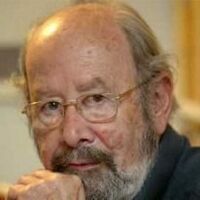
José Manuel Caballero Bonald (Jerez de la Frontera, 11 de noviembre de 1926) es un escritor y poeta español. La cuidadosa utilización del lenguaje, un léxico muy cuidado y el barroquismo caracterizan su obra. Vida De padres cubanos estudió Filosofía y Letras en Sevilla entre 1949 y 1952 y naútica y astronomía en Cádiz. En estos mismos años comenzó a relacionarse con los cordobeses de la revista Cántico, como Pablo García Baena. Su carrera continuó en Iberoamérica, donde fue profesor universitario en Bogotá y colaboró con Camilo José Cela y con el proyecto del Instituto de Lexicografía de la Real Academia Española. Además tuvo un idilio de siete años con la primera mujer de éste, Rosario Conde. Doctor Honoris Causa por la Universidad de Cádiz en 2004. En abril de 2009 publica La noche no tiene paredes, un poemario compuesto por 103 poemas donde hace una reivindicación de la incertidumbre, porque, en sus propias palabras, «el que no tiene dudas, el que está seguro de todo, es lo más parecido que hay a un imbécil.» En 1986 se inauguró un instituto con su nombre, y en 1998 se contituyó la fundación que lleva su nombre, Fundación Caballero Bonald. En una reciente entrevista comunicó que, tras la publicación de "Entreguerras", su libro formado por un solo poema de casi 3.000 versos, "ya no voy a escribir nada". También ha reivindicado la necesidad de dudar con una frase contundente: "El que no tiene dudas, el que está seguro de todo, es lo más parecido que hay a un imbécil". Y ha reconocido que escribir poesía lo ayuda a mantenerse joven. "El permanecer en la brecha te rejuvenece. El que no se queda callado, el que iguala el pensamiento con la vida, tiene ya mucho ganado para rejuvenecer" dijo al cumplir 80 años de edad. El 29 de noviembre de 2012 es galardonado con el Premio Cervantes. Bibliografía * Sede de la Fundación Caballero Bonald. Poesía * Las adivinaciones (1952) * Memorias de poco tiempo (1954) * Anteo (1956) * Las horas muertas (1959) * Pliegos de cordel (1963) * Descrédito del héroe (1977) * Laberinto de Fortuna (1984) * Diario de Argónida (1997) * Manual de infractores (2005) * La noche no tiene paredes (2009) * Entreguerras (2012), autobiografía en verso10 Antologías poéticas * El papel del coro (1961) * Vivir para contarlo (1969). Poesía completa * Selección natural (1983) * Doble vida (1989) * Poesía amatoria (1999) * Somos el tiempo que nos queda (2004 y 2007). Poesía completa * Años y libros (2004) * Paz con aceite (2005) * Summa vitae (2007) * Casa junto al mar (2008) * Estrategia del débil (2010) * Ruido de muchas aguas (2011) Novela * Dos días de septiembre (1962) * Ágata ojo de gato (1974), que versa sobre las amenazas al Coto de Doñana11 * Toda la noche oyeron pasar pájaros (1981) * En la casa del padre (1988) * Campo de Agramante (1992) Memorias * Tiempo de guerras perdidas (1995) * La costumbre de vivir (2001) * La novela de la memoria (2010). Edición en un solo volumen de Tiempo de guerras *perdidas y La costumbre de vivir Ensayos y artículos * El cante andaluz (1953) * El baile andaluz (1957) * Cádiz, Jerez y los puertos (1963) * El vino (1967) * Narrativa cubana de la revolución (1968) * Luces y sombras del flamenco (1975) * Cuixart (1977) * Brevario del vino (1980) * Luis de Góngora: poesía (1982) * Los personajes de Fajardo (1986) * De la sierra al mar de Cádiz (1988) * Andalucía (1989) * Botero: la corrida (1990) * España: fiestas y ritos (1992) * Sevilla en tiempos de Cervantes (1992) * Copias del natural (1999) * Mar adentro (2002) * José de Espronceda (2002) * Miguel de Cervantes. Poesía (2005) * La ruta de la campiña (2005). Junto a Vicente Rojo Almarán * La luz de Cádiz en la pintura de Cortés (2005). Junto a Antonio Agudo y Francisco Calvo Serraller * Encuentros con la poesía (2006) * Copias rescatadas del natural (2006) * Relecturas. Prosas reunidas (1956-2005) (3 vols., 2006) * Un Madrid literario (2009) * Oficio de lector (en imprenta) Premios * Premio de Poesía Platero (1950) * Accésit del Premio Adonáis (1952) * Premio Boscán (1959) * Premio de la Crítica (1963, 1974 y 1977) * Premio Fundación Pablo Iglesias (1978) * Premio Ateneo de Sevilla (1981) * Premio Plaza & Janés (1988) * Premio Andalucía de las Letras (1990) * Miembro correspondiente de la Academia Norteamericana de la Lengua Española (1993-1994) * Declarado Hijo Predilecto de Andalucía (1997) * Medalla de Oro del Círculo de Bellas Artes de Madrid (2000) * Premio Reina Sofía de Poesía Iberoamericana (2004) * Premio Nacional de las Letras Españolas (2005) * Premio Internacional Terenci Moix (2005) * Premio Nacional de Poesía (España) (2006) * Premio Internacional de Poesía Federico Garcia Lorca (2009) * En 2010, Premio ABC Cultural & Ámbito Cultural, de manos de sus directores Fernando Rodríguez Lafuente y Ramón Pernas. * Premio Cervantes (2012) * Autor del año 2013 por la Consejería de Cultura de la Junta de Andalucía12 Referencia Wikipedia—http://es.wikipedia.org/wiki/José_Manuel_Caballero_Bonald
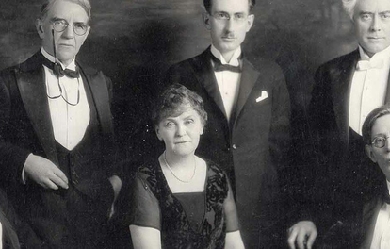
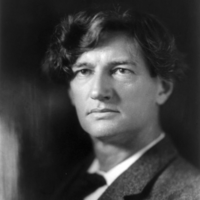
Bliss Carman FRSC (April 15, 1861– June 8, 1929) was a Canadian poet who lived most of his life in the United States, where he achieved international fame. He was acclaimed as Canada’s poet laureate during his later years. In Canada, Carman is classed as one of the Confederation Poets, a group which also included Charles G.D. Roberts (his cousin), Archibald Lampman, and Duncan Campbell Scott. “Of the group, Carman had the surest lyric touch and achieved the widest international recognition. But unlike others, he never attempted to secure his income by novel writing, popular journalism, or non-literary employment. He remained a poet, supplementing his art with critical commentaries on literary ideas, philosophy, and aesthetics.” Life He was born William Bliss Carman in Fredericton, in the Maritime province of New Brunswick. “Bliss” was his mother’s maiden name. He was the great grandson of United Empire Loyalists who fled to Nova Scotia after the American Revolution, settling in New Brunswick (then part of Nova Scotia). His literary roots run deep with an ancestry that includes a mother who was a descendant of Daniel Bliss of Concord, Massachusetts, the great-grandfather of Ralph Waldo Emerson. His sister married the botanist and historian William Francis Ganong. And on his mother’s side he was a first cousin to Charles (later Sir Charles) G. D. Roberts. Education and early career Carman was educated at the Fredericton Collegiate School and the University of New Brunswick (UNB), from which he received a B.A. in 1881. At the Collegiate School he came under the influence of headmaster George Robert Parkin, who gave him a love of classical literature and introduced him to the poetry of Dante Gabriel Rossetti and Algernon Charles Swinburne. His first published poem was in the UNB Monthly in 1879. He then spent a year at Oxford and the University of Edinburgh (1882–1883), but returned home to receive his M.A. from UNB in 1884. After the death of his father in January 1885 and his mother in February 1886, Carman enrolled in Harvard University (1886–1887). At Harvard he moved in a literary circle that included American poet Richard Hovey, who would become his close friend and his collaborator on the successful Vagabondia poetry series. Their circle included Herbert Copeland and F. Holland Day, who would later form the Boston publishing firm Copeland & Day that would launch Vagabondia. After Harvard Carman briefly returned to Canada, but was back in Boston by February 1890. “Boston is one of the few places where my critical education and tastes could be of any use to me in earning money,” he wrote. “New York and London are about the only other places.” Unable to find employment in Boston, he moved to New York City and became literary editor of the New York Independent at the grand sum of $20/week. There he could help his Canadian friends get published, in the process “introducing Canadian poets to its readers.” However, Carman was never a good fit at the semi-religious weekly, and he was summarily dismissed in 1892. "Brief stints would follow with Current Literature, Cosmopolitan, The Chap-Book, and The Atlantic Monthly, but after 1895 he would be strictly a contributor to the magazines and newspapers, never an editor in any department.” To make matters worse, Carman’s first book of poetry, 1893's Low Tide on Grand Pré, was not a success; no Canadian company would publish it, and the U.S. edition stiffed when its publisher went bankrupt. Literary success At this low point, Songs of Vagabondia, the first Hovey-Carman collaboration, was published by Copeland & Day in 1894. It was an immediate success. “No one could have been more surprised at the tremendous popularity of these care-free celebrations (the first of the three collections went through seven rapid editions) than the young authors, Richard Hovey and Bliss Carman.” Songs of Vagabondia would ultimately "go through sixteen printings (ranging from 500 to 1000 copies) over the next thirty years. The three Vagabondia volumes that followed fell slightly short of that record, but each went through numerous printings. Carman and Hovey quickly found themselves with a cult following, especially among college students, who responded to the poetry’s anti-materialistic themes, its celebration of individual freedom, and its glorification of comradeship.” The success of Songs of Vagabondia prompted another Boston firm, Stone & Kimball, to reissue Low Tide... and to hire Carman as the editor of its literary journal, The Chapbook. The next year, though, the editor’s job went West (with Stone & Kimball) to Chicago, while Carman opted to remain in Boston. “In Boston in 1895, he worked on a new poetry book, Behind the Arras, which he placed with a prominent Boston publisher (Lamson, Wolffe).... He published two more books of verse with Lamson, Wolffe." He also began writing a weekly column for the Boston Evening Transcript, which ran from 1895 to 1900. In 1896 Carman met Mary Perry King, who became the greatest and longest-lasting female influence in his life. Mrs. King became his patron: “She put pence in his purse, and food in his mouth, when he struck bottom and, what is more, she often put a song on his lips when he despaired, and helped him sell it.” According to Carman’s roommate, Mitchell Kennerley, "On rare occasions they had intimate relations at 10 E. 16 which they always advised me of by leaving a bunch of violets—Mary Perry’s favorite flower—on the pillow of my bed." If he knew of the latter, Dr. King did not object: "He even supported her involvement in the career of Bliss Carman to the extent that the situation developed into something close to a ménage à trois" with the Kings. Through Mrs. King’s influence Carman became an advocate of ‘unitrinianism,’ a philosophy which "drew on the theories of François-Alexandre-Nicolas-Chéri Delsarte to develop a strategy of mind-body-spirit harmonization aimed at undoing the physical, psychological, and spiritual damage caused by urban modernity." This shared belief created a bond between Mrs. King and Carman but estranged him somewhat from his former friends. In 1899 Lamson, Wolffe was taken over by the Boston firm of Small, Maynard & Co., who had also acquired the rights to Low Tide... "The rights to all Carman’s books were now held by one publisher and, in lieu of earnings, Carman took a financial stake in the company. When Small, Maynard failed in 1903, Carman lost all his assets.” Down but not out, Carman signed with another Boston company, L.C. Page, and began to churn out new work. Page published seven books of new Carman poetry between 1902 and 1905. As well, the firm released three books based on Carman’s Transcript columns, and a prose work on unitrinianism, The Making of Personality, that he’d written with Mrs. King. "Page also helped Carman rescue his ‘dream project,’ a deluxe edition of his collected poetry to 1903.... Page acquired distribution rights with the stipulation that the book be sold privately, by subscription. The project failed; Carman was deeply disappointed and became disenchanted with Page, whose grip on Carman’s copyrights would prevent the publication of another collected edition during Carman’s lifetime.” Carman also picked up some needed cash in 1904 as editor-in-chief of the 10-volume project, The World’s Best Poetry. Later years After 1908 Carman lived near the Kings’ New Canaan, Connecticut, estate, “Sunshine”, or in the summer in a cabin near their summer home in the Catskills, “Moonshine.” Between 1908 and 1920, literary taste began to shift, and his fortunes and health declined. “Although not a political activist, Carman during the First World War was a member of the Vigilantes, who supported American entry into the conflict on the Allied side.” By 1920, Carman was impoverished and recovering from a near-fatal attack of tuberculosis. That year he revisited Canada and “began the first of a series of successful and relatively lucrative reading tours, discovering ‘there is nothing worth talking of in book sales compared with reading.’” “'Breathless attention, crowded halls, and a strange, profound enthusiasm such as I never guessed could be,' he reported to a friend. ‘And good thrifty money too. Think of it! An entirely new life for me, and I am the most surprised person in Canada.’” Carman was feted at "a dinner held by the newly-formed Canadian Authors’ Association at the Ritz Carlton Hotel in Montreal on 28 October 1921 where he was crowned Canada’s Poet Laureate with a wreath of maple leaves.” The tours of Canada continued, and by 1925 Carman had finally acquired a Canadian publisher. "McClelland & Stewart (Toronto) issued a collection of selected earlier verses and became his main publisher. They benefited from Carman’s popularity and his revered position in Canadian literature, but no one could convince L.C. Page to relinquish its copyrights. An edition of collected poetry was published only after Carman’s death, due greatly to the persistence of his literary executor, Lorne Pierce.” During the 1920s, Carman was a member of the Halifax literary and social set, The Song Fishermen. In 1927 he edited The Oxford Book of American Verse. Carman died of a brain hemorrhage at the age of 68 in New Canaan, and was cremated in New Canaan. “It took two months, and the influence of New Brunswick’s Premier J.B.M. Baxter and Canadian Prime Minister W.L.M. King, for Carman’s ashes to be returned to Fredericton.” “His ashes were buried in Forest Hill Cemetery, Fredericton, and a national memorial service was held at the Anglican cathedral there.” Twenty-five years later, on May 13, 1954, a scarlet maple tree was planted at his gravesite, to grant his request in his 1892 poem “The Grave-Tree”: Let me have a scarlet maple For the grave-tree at my head, With the quiet sun behind it, In the years when I am dead. Writing Low Tide on Grand Pré As a student at Harvard, Carman “was heavily influenced by Royce, whose spiritualistic idealism, combined with the transcendentalism of Ralph Waldo Emerson, lies centrally in the background of his first major poem, ”Low Tide on Grand Pré" written in the summer and winter of 1886." “Low Tide...” was published in the Spring, 1887 Atlantic Monthly, giving Carman a literary reputation while still at Harvard. It was also included in the 1889 anthology, Songs of the Great Dominion. Literary critic Desmond Pacey considered “Low Tide...” to be “the most nearly perfect single poem to come out of Canada. It will withstand any amount of critical scrutiny.” “Low Tide...” served as the title poem for Carman’s first book. “The poems in this volume have been collected with reference to their similarity of tone,” Carman wrote in his preface; a nostalgic tone of pervading loss and melancholy. Three outstanding examples are “The Eavesdropper,” “In Apple Time” and “Wayfaring.” However, “none can equal the artistry of the title poem. What is more, although Carman would publish over thirty other volumes during his lifetime, none of them contains anything that surpasses this poem he wrote when he was barely twenty-five years old.” Vagabondia Carman rose to prominence in the 1890s, a decade the poetry of which anthologist Louis Untermeyer has called marked by “a cheerless evasion, a humorous unconcern; its most representative craftsmen were, with four exceptions, the writers of light verse.” The first two of those four exceptions were Richard Hovey and Bliss Carman. For Untermeyer: "The poetry of this period... is dead because it detached itself from the world.... But... revolt openly declared itself with the publication of Songs from Vagabondia (1894), More Songs from Vagabondia (1896), and Last Songs from Vagabondia (1900).... It was the heartiness, the gypsy jollity, the rush of high spirits, that conquered. Readers of the Vagabondia books were swept along by their speed faster than by their philosophy.” Even modernists loved Vagabondia. In the "October, 1912 issue of the London Poetry Review, Ezra Pound noted that he had ‘greatly enjoyed The Songs of Vagabondia by Mr. Bliss Carman and the late Richard Hovey.’” Carman’s most famous poem from the first volume is arguably “The Joys of the Open Road.” More Songs... contains “A Vagabond Song,” once familiar to a generation of Canadians. "Canadian youngsters who were in grade seven anytime between the mid-1930s and the 1950s were probably exposed to... 'A Vagabond Song’ [which] appeared in The Canada Book of Prose and Verse, Book One, the school reader that was used in nearly every province" (and was edited by Lorne Pierce). In 1912 Carman would publish Echoes from Vagabondia as a solo work. (Hovey had died in 1900). More of a remembrance book than part of the set, it has a distinct elegiac tone. It contains the lyric “The Flute of Spring”. Behind the Arras With Behind the Arras (1895), Carman continued his practice of “bringing together poems that were ‘in the same key.’ Whereas Low Tide on Grand Pré is elegiacal and melancholy, Songs from Vagabondia is mostly light and jaunty, while Behind the Arras is philosophical and heavy.” “Behind the Arras” the poem is a long meditation that uses the speaker’s house and its many rooms as a symbol of life and its choices. The poem does not succeed: “there are so many asides that the allegory is lost along with any point the poet hoped to make.” Ballad of Lost Haven In keeping with the “same key” idea, Carman’s Ballad of Lost Haven (1897) was a collection of poetry about the sea. Its notable poems include the macabre sea shanty, The Gravedigger. By the Aurelian Wall “By the Aurelian Wall” is Carman’s elegy to John Keats. It served as the title poem of his 1898 collection, a book of formal elegies. In the last poem in the book, “The Grave-Tree,” Carman writes about his own death. The Pipes of Pan “Pan, the goat-god, traditionally associated with poetry and with the fusion of the earthly and the divine, becomes Carman’s organizing symbol in the five volumes issued between 1902 and 1905" under the above title. Under the influence of Mrs. King, Carman had begun to write in both prose and poetry about the ideas of ‘unitrinianism,’ "a strategy of mind-body-spirit harmonization aimed at undoing the physical, psychological, and spiritual damage caused by urban modernity... therapeutic ideas [which] resulted in the five volumes of verse assembled in Pipes of Pan." The Dictionary of Canadian Biography (DCB) calls the series “a collection that contains many superb lyrics but, overall, evinces the dangers of a soporific aesthetic.” The 'superb lyrics’ include the much-anthologized “The Dead Faun” from Volume I, From the Book of Myths; “From the Green Book of the Bards”, the title poem of Volume II; “Lord of My Heart’s Elation” from the same volume; and many of the erotic poems of Volume III, Songs of the Sea Children (such as LIX “I loved you when the tide of prayer”). As a whole, though, the Pan series shows (perhaps more than any other work) the truth of Northrop Frye’s 1954 observation that Carman “badly needs a skillful and sympathetic selection.” Sappho: One Hundred Lyrics There were no such problems with Carman’s next book. Perhaps because of the underlying concept, Sappho: One Hundred Lyrics (1904) has a structure and unity that helps make it what has been called Carman’s “finest volume of poetry.” Sappho was an Ancient Greek poet from the island of Lesbos, who was included in the Greek canon of nine lyric poets. Most of her poetry, which was well-known and greatly admired throughout antiquity, has been lost, but her reputation has endured, supported by the surviving fragments of some of her poems. Carman’s method, as Charles G.D. Roberts saw it in his Introduction to the book,"apparently, has been to imagine each lost lyric as discovered, and then to translate it; for the indefinable flavor of the translation is maintained throughout, though accompanied by the fluidity and freedom of purely original work." It was a daunting task, as Roberts admits: “It is as if a sculptor of to-day were to set himself, with reverence, and trained craftsmanship, and studious familiarity with the spirit, technique, and atmosphere of his subject, to restore some statues of Polyclitus or Praxiteles of which he had but a broken arm, a foot, a knee, a finger upon which to build.” Yet, on the whole, Carman succeeded. “Written more or less contemporaneously with the love poems in Songs of the Sea Children, the Sappho reconstructions continue the amorous theme from a feminine point of view. Nevertheless, the feelings ascribed to Sappho are pure Carman in their sensitive and elegiac melancholy.” Virtually all of the lyrics are of high quality; some often-quoted are XXIII ("I loved thee, Atthis, in the long ago,"), LIV ("How soon will all my lovely days be over"), LXXIV ("If death be good"), LXXXII ("Over the roofs the honey-coloured moon"). “Next to Low Tide on Grand Pré, Sappho: One Hundred Lyrics seems to be the collection that continues to find the most favour among Carman’s critics. D.M.R. Bentley, for example, calls it ‘undoubtedly one of the most attractive, engaging and satisfying works of any of the Confederation poets.’” Bentley argued that "the brief, crisp lyrics of the Sappho volume almost certainly contributed to the aesthetic and practice of Imagism. Later work In his review of 1954's Selected Poems of Bliss Carman, literary critic Northrop Frye compared Carman and the other Confederation Poets to the Group of Seven: “Like the later painters, these poets were lyrical in tone and romantic in attitude; like the painters, they sought for the most part uninhabited landscape.” But Frye added: “The lyrical response to landscape is by itself, however, a kind of emotional photography, and like other forms of photography is occasional and epigrammatic.... Hence the lyric poet, after he has run his gamut of impressions, must die young, develop a more intellectualized attitude, or start repeating himself. Carman’s meeting of this challenge was only partly successful.” It is true that Carman had begun to repeat himself after Sappho. "Much of Carman’s writing in poetry and prose during the decade preceding World War I is as repetitive as the title of Echoes from Vagabondia (1912) intimates" says the DCB. What had made his poetry so remarkable at the beginning– that every new book was completely new– was gone. However, Carman’s career was by no means over. He "published four other collections of new poetry during his lifetime and two more were ready for publication at the time of his death: The Rough Rider, and Other Poems (1908), A Painter’s Holiday, and Other Poems (1911), April Airs (1916), Far Horizons (1925), Sanctuary (1929), and Wild Garden (1929). James Cappon’s comment on Far Horizons applies almost equally to the other five volumes: ‘There is nothing new in its poetic quality which has the sweet sadness of age rehearsing old tunes with an art which is now very smooth though with less vivacity than it used to have.’” Not only did Carman continue to write, but he continued to write fine poems: poems such as “The Old Grey Wall” (April Airs), the Wilfred Campbell-ish “Rivers of Canada” (Far Horizons), “The Ghost-yard of the Goldenrod” and “The Ships of Saint John” (Later Poems, 1926), and “The Winter Scene” (Sanctuary: The “Sunshine House” sonnets). The best of these have the same nostalgic air of melancholy and loss with which Carman began in “Low Tide...,” but now even more poignant as the poet approached his own death. Recognition In 1906 Carman received honorary degrees from UNB and McGill University. He was elected a corresponding Fellow of the Royal Society of Canada in 1925. The Society awarded him its Lorne Pierce Gold Medal in 1928. He was awarded a medal from the American Academy of Arts and Letters in 1929. In 1945, Carman was recognized as a Person of National Historic Significance by the government of Canada. Carman is honored by a sculpture erected on the UNB campus in 1947, which portrays him with fellow poets Sir Charles G.D. Roberts and Francis Joseph Sherman. There is a middle school named after him in Fredericton, New Brunswick (Bliss Carman Middle School). There is also a school named after him in Toronto, Ontario. “Bliss Carman Heights” (an extension of the Skyline Acres subdivision) is a subdivision located in Fredericton, New Brunswick overlooking the Saint John River. It consists of Essex Street, Gloucester Crescent, Reading Street, Ascot Court, and Ascot Drive. An extension of the Bliss Carman Heights subdivision is named “Poet’s Hill” and consists of Bliss Carman Drive, Poets Lane and Windflower Court (named for one of Carman’s poems of the same name). In October 1916, American composer Leo Sowerby was inspired to write his best-known organ piece, “Comes Autumn Time,” after reading Carman’s poem, “Autumn,” in the Literature section of the Sunday Edition of the Chicago Tribune on October 16 of that year. Publications Poetry collections * Low Tide on Grand Pre: A Book Of Lyrics. New York: Charles L. Webster. 1893. - Low Tide on Grand Pré: A Book of Lyrics at Google Books * Carman, Bliss; Hovey, Richard (1894). Songs From Vagabondia. Tom B. Meteyard, Illus. Boston: Copeland & Day. – Songs from Vagabondia at Google Books– A Vagabondia Songs (2013 Reprint) at Google Books * A Seamark: A Threnody for Robert Louis Stevenson. Boston: Copeland & Day. 1895. - A Seamark: A Threnody for Robert Louis Stevenson at Google Books * Behind The Arras: A Book Of The Unseen. Tom B. Meteyard, Illus. Boston: Lamson, Wolffe. 1895. * Ballads of Lost Haven: A Book Of The Sea. Boston: Lamson, Wolffe. 1897. * By The Aurelian Wall: And Other Elegies. Boston: Lamson, Wolffe. 1898. * Carman, Bliss; Hovey, Richard (1896). More Songs From Vagabondia. Tom B. Meteyard, Illus. Boston: Copeland & Day. – More Songs from Vagabondia at Google Books– A Vagabondia Songs (2013 Reprint) at Google Books * A Winter Holiday. Boston: Small, Maynard. 1899. * Carman, Bliss; Hovey, Richard (1901). Last Songs From Vagabondia. Tom B. Meteyard, Illus. Boston: Small, Maynard. – Last Songs from Vagabondia at Google Books– A Vagabondia Songs (2013 Reprint) at Google Books * Ballads and Lyrics. London: A.H. Bullen. 1902. * Ode on the Coronation of King Edward. Boston: L.C. Page. 1902. * Pipes Of Pan: From the Book of Myths. Boston: L.C. Page. 1902. - Pipes Of Pan: From the Book of Myths at Google Books * Pipes Of Pan: From the Green Book of the Bards. Boston: L.C. Page. 1903. - Pipes Of Pan: From the Green Book of the Bards at Google Books * Pipes Of Pan: Songs of the Sea Children. Boston: L.C. Page. 1904. - Pipes Of Pan: Songs of the Sea Children at Google Books * Pipes Of Pan: Songs From a Northern Garden. Boston: L.C. Page. 1904. - Pipes Of Pan: Songs From a Northern Garden at Google Books * Pipes Of Pan: From the Book of Valentines. Boston: L.C. Page. 1905. - Pipes Of Pan: From the Book of Valentines at Google Books * Sappho: One Hundred Lyrics. Intro. by Charles G.D. Roberts. Boston: L.C. Page. 1904. * Poems. (London: Chiswick P, 1905). * The Rough Rider: And Other Poems. New York: M. Kennerley. 1909. * A Painter’s Holiday, and Other Poems. New York: F.F. Sherman. 1911. * Echoes From Vagabondia. Boston: Small, Maynard. 1912. * April Airs: A Book Of New England Lyrics. Boston: Small, Maynard. 1916. * Carman, Bliss; King, Mary Perry (1918). The Man of The Marne: And Other Poems. New Canaan, Connecticut: Ponus Press. * The Vengeance of Noel Brassard: A Tale of the Acadian Expulsion (PDF). Cambridge, Massachusetts: The University Press. 1919. * Far Horizons. Boston: Small, Maynard and Company. 1925. - Far Horizons at Google Books * Later Poems. Toronto: McClelland & Steward. 1926. * Sanctuary: Sunshine House Sonnets. Whitman Bailey, Illus. Toronto: McClelland & Steward. 1929. * Wild Garden. Toronto: McClelland & Steward. 1929. * Bliss Carman’s Poems. New York: Dodd, Mead. 1931. - Bliss Carman’s Poems at Google Books * Pierce, Lorne, ed. (1954). The Selected Poems Of Bliss Carman. Toronto: McClelland & Stewart. * A Vision Of Sappho. Toronto: Canadiana House. 1968. * The Poems of Bliss Carman. Toronto: McClelland & Stewart. 1976. ISBN 978-0-7710-9509-2. * Souster, Raymond; Lochhead, Douglas, eds. (1985). Windflower: Poems Of Bliss Carman. Ottawa: Tecumseh. ISBN 978-0-919662-07-0. Drama * Bliss Carman and Mary Perry King. Daughters of Dawn: A Lyrical Pageant of Series of Historical Scenes for Presentation With Music and Dancing. (New York: M. Kennerley, 1913). * Bliss Carman and Mary Perry King. Earth Deities: And Other Rhythmic Masques. (New York: M. Kennerley, 1914). Prose collections * The Kinship Of Nature. Boston: L. C. Page. 1904. * The Poetry Of Life. Boston: L. C. Page. 1905. - The poetry of life (1906 ed.) at Google Books * The Friendship of Art. Boston: L. C. Page. 1908. - The Friendship of Art (Scholar’s Choice ed.). ISBN 978-1-2981-9930-0. * The Making of Personality. Boston: L. C. Page. 1908. - The Making of Personality at Google Books * Talks on Poetry and Life; Being a Series of Five Lectures Delivered Before the University of Toronto, December 1925 (Speech). transcribed by Blanche Hume. 1926. * Pierce, Lorne, ed. (1931). Bliss Carman’s Scrap-Book: A Table Of Contents. Toronto: Ryerson. * Gundy, H. Pearson, ed. (1982). Letters of Bliss Carman. Kingston, Ontario: McGill-Queen’s University Press. Edited * The World’s Best Poetry (10 volumes). New York: The University Society. 1904. - The World’s best poetry, Volume 1 at Google Books * The Oxford Book of American Verse (U.S. ed.). New York: Albert & Charles Boni. 1927. * Carman, Bliss; Pierce, Lorne, eds. (1935). Our Canadian Literature: Representative Verse, English and French. Toronto: Ryerson. Archive * Bliss Carman Papers, 1889–1927 (2 linear ft.) are housed in the Department of Special Collections and University Archives at Stanford University Libraries Sources * "Bliss Carman’s Letters To Margaret Lawrence, 1927-1929". Post-Confederation Poetry: Texts And Contexts. Ed. D.M.R. Bentley. London: Canadian Poetry P, 1995. * Bliss Carman: A Reappraisal. Ed. Gerald Lynch. Ottawa: University Of Ottawa Press, 1990. * Letters of Bliss Carman. Ed. H. Pearson Gundy. Kingston: McGill-Queen’s University P, 1981. * Hugh McPherson. The Literary Reputation Of Bliss Carman: A Study In The Development Of Canadian Taste In Poetry. 1950. * Muriel Miller. Bliss Carman, A Portrait. Toronto: Ryerson, 1935. * Muriel Miller. Bliss Carman: Quest And Revolt. St. John’s, Nfld.: Jesperson P, 1985. * Donald G Stephens. Bliss Carman. 1966. * Donald G. Stephens. The Influence Of English Poets Upon The Poetry Of Bliss Carman. 1955. * Margaret A. Stewart. Bliss Carman: Poet, Philosopher, Teacher. 1976. Further reading * Robert Gibbs, “Voice and Persona in Carman and Roberts,” in Atlantic Provinces Literature Colloquium Papers [ed. by Kenneth MacKinnon] (1977) * Nelson-McDermott, C. (Fall–Winter 1990). “Passionate Beauty: Carman’s Sappho Poems”. Canadian Poetry: Studies/Documents/Reviews (Canadian Poetry Press) 27: 40–45. * Malcolm Ross, “A Strange Aesthetic Ferment,” Canadian Literature, 68-69 (Spring-Summer 1976) * John Robert Sorfleet, "Transcendentalist, Mystic, Evolutionary Idealist: Bliss Carman 1886-1894," in Colony and Confederation [ed. George Woodcock](1974) * Thomas B. Vincent, “Bliss Carman: A Life in Literary Publishing,” Historical Perspectives on Canadian Publishing, McMaster.ca. Web. * Symons, Arthur (Fall–Winter 1995). Ware, Tracy, ed. “Arthur Symons’ Reviews of Bliss Carman”. Canadian Poetry: Studies/Documents/Reviews (Canadian Poetry Press) 37: 100–113. * Terry Whalen, Canadian Writers and Their Work: Volume Two [ed. Robert Lecker, Ellen Quigley, & Jack David] (1983) References Wikipedia—https://en.wikipedia.org/wiki/Bliss_Carman
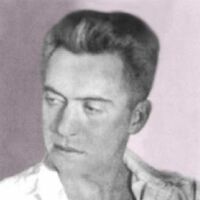
Born on July 21, 1899, in Garrettsville, Ohio, Harold Hart Crane was a highly anxious and volatile child. He began writing verse in his early teenage years, and though he never attended college, read regularly on his own, digesting the works of the Elizabethan dramatists and poets—Shakespeare, Marlowe, and Donne—and the nineteenth-century French poets—Vildrac, Laforgue, and Rimbaud. His father, a candy manufacturer, attempted to dissuade him from a career in poetry, but Crane was determined to follow his passion to write. Living in New York City, he associated with many important figures in literature of the time, including Allen Tate, Katherine Anne Porter, E. E. Cummings, and Jean Toomer, but his heavy drinking and chronic instability frustrated any attempts at lasting friendship. An admirer of T. S. Eliot, Crane combined the influences of European literature and traditional versification with a particularly American sensibility derived from Walt Whitman. His major work, the book-length poem, The Bridge, expresses in ecstatic terms a vision of the historical and spiritual significance of America. Like Eliot, Crane used the landscape of the modern, industrialized city to create a powerful new symbolic literature. Hart Crane committed suicide in 1932, at the age of thirty-three, by jumping from the deck of a steamship sailing back to New York from Mexico. A SELECTED BIBLIOGRAPHY Poetry The Complete Poems and Selected Letters and Prose (1966) The Bridge (1930) White Buildings (1926) Prose Letters (1952) References Poets.org – http://www.poets.org/poet.php/prmPID/233
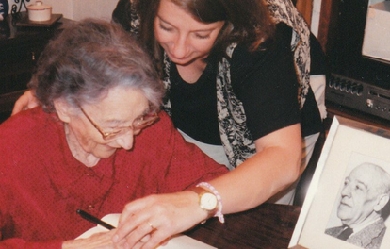
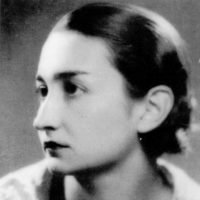
Ernestina Michels de Champourcin y Morán de Loredo (Vitoria, 10 de julio de 1905-Madrid, 27 de marzo de 1999) fue una poeta española de la Generación del 27. Está en la nómina de Las Sinsombrero. Su poesía es profunda y ligera, suave y contundente: melodiosa. Sus versos, son de fácil y agradable lectura, y en ellos supo expresar certeramente la intensa hondura de su alma. Esto hace que su temática sea muy distinta a la de algunos de sus contemporáneos. En parte de su obra se rememora la poesía de los grandes místicos españoles: Santa Teresa y San Juan de la Cruz; así como la obra de Juan Ramón Jiménez. De hecho, en Presencia a oscuras (1952) utiliza sonetos, décimas, romances y otras estrofas tradicionales de la poesía barroca.
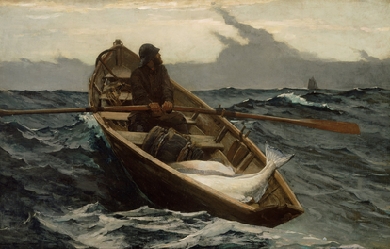

This blog started out as a form of therapy, a way to block out worries and stresses, but it has evolved into a way of feeling positive about my work and proud of what I have achieved. I have always loved poetry and it's great to have this corner to display what I have achieved.
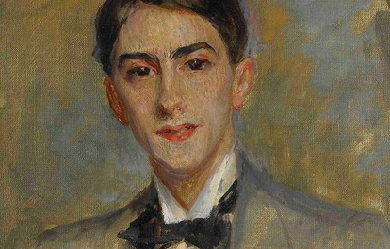
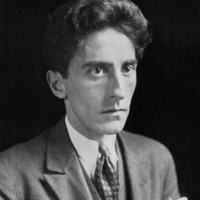
Jean Cocteau, né le 5 juillet 1889 à Maisons-Laffitte et mort le 11 octobre 1963 dans sa maison de Milly-la-Forêt, est un poète, graphiste, dessinateur, dramaturge et cinéaste français. Il est élu à l’Académie française en 1955. Comptant parmi les artistes qui ont marqué le XXe siècle, il a côtoyé la plupart de ceux qui ont animé la vie artistique de son époque. Il a été l’imprésario de son temps, le lanceur de modes, le bon génie d’innombrables artistes. En dépit de ses œuvres littéraires et de ses talents artistiques, Jean Cocteau insista toujours sur le fait qu’il était avant tout un poète et que tout travail est poétique. Biographie Jeunes années Jean Cocteau, de son nom complet Clément Eugène Jean Maurice Cocteau, est né en juillet 1889, dans la maison de son grand-père maternel, place Sully à Maisons-Laffitte dans une famille bourgeoise de Paris. Son père, Georges Alfred Cocteau, né le 8 juillet 1842 à Melun, avocat et peintre amateur, et sa mère, Marie Junia Émilie Eugénie Lecomte, née le 21 septembre 1855 à Maisons-Laffitte, se sont mariés le 7 juillet 1875 dans le 9e arrondissement de Paris. Son grand-père paternel, Athanase Cocteau (1798-1865) était notaire et maire de Melun, son grand-père maternel, Eugène Lecomte (1828-1906), agent de change et collectionneur d’art, son oncle maternel, Raymond Lecomte, diplomate. Son père qui vivait de ses rentes se suicide le 5 avril 1898 à Paris, Jean Cocteau portera longtemps cette blessure. Il a une grande sœur, Marthe (1877-1958) et un grand frère, Paul (1881-1961). Il découvre le théâtre et le cinéma à six ans. Dès l’âge de quinze ans, Cocteau quitte le cocon familial pour étudier au lycée Condorcet avec notamment comme camarade le vénéneux Pierre Dargelos qui exerce sur lui une véritable fascination. Manifestant peu d’intérêt pour les études, il est renvoyé du lycée pour indiscipline en 1904 et rate son baccalauréat deux fois. En 1908, le tragédien Édouard de Max organise au théâtre Femina une matinée poétique avec le premier récital des poésies du jeune Cocteau. Il publie son premier recueil de poèmes à compte d’auteur, « La Lampe d’Aladin » inspiré des Mille et Une Nuits, à 20 ans (1909) et devient alors connu dans les cercles artistiques bohème comme le « prince frivole ». C’est sous ce titre qu’il publie à 21 ans, en 1910, son second recueil de poèmes. Edith Wharton le décrit comme un homme pour qui « chaque grande ligne de la poésie était un lever de soleil, chaque coucher du soleil la base de la ville merveilleuse... » Il est également fasciné par le maître des ballets russes, Serge de Diaghilev et ses artistes principaux, le peintre Léon Bakst et le danseur Vaslav Nijinsky. La rencontre avec Diaghilev qu’il veut étonner marque la première crise dans la création coctalienne : il renie ses recueils de poèmes, pastiches assez ampoulés, et se rapproche de l’avant-garde cubiste et futuriste. De sa collaboration avec les artistes russes naissent Le Dieu bleu en 1912, avec des costumes et décors de Léon Bakst sur une musique composée par Reynaldo Hahn, puis Parade, ballet produit en 1917 avec des costumes et décors de Pablo Picasso et une musique composée par Erik Satie. Cette œuvre inspire à Guillaume Apollinaire le néologisme de surréalisme, repris ensuite par André Breton et Philippe Soupault pour la création de ce mouvement culturel. Cocteau collabore au mouvement dada et a une grande influence sur le travail des autres, dans le groupe même composé par ses amis, « Les Six » dont il devient le porte-parole. Ayant été réformé du service militaire, Cocteau décide néanmoins de participer à la guerre de 1914 comme ambulancier avec un convoi sanitaire civil. Adopté par un régiment de fusiliers marins, il vit à Dixmude, vole avec Roland Garros mais est rapidement démobilisé pour raisons de santé. Il rejoint Paris et reprend ses activités artistiques. Après le nécessaire temps de gestation, il écrira sur cette guerre l’un de ses meilleurs romans : Thomas l’Imposteur. Dans les années 1920, Cocteau s’associe avec Marcel Proust, André Gide et Maurice Barrès. Raymond Radiguet En 1918, Max Jacob lui présente le jeune poète Raymond Radiguet. Il exercera sur la courte carrière de ce dernier une influence prépondérante : Jean Cocteau aussitôt devine—« À quoi ? Je me le demande », écrira-t-il plus tard dans La Difficulté d’être—un talent caché. Enthousiasmé par les poèmes que Radiguet lui lit, Cocteau le conseille, l’encourage et le fait travailler ; il l’aide ensuite à publier ses vers dans les revues d’avant-garde, notamment dans Sic et dans Littérature. Les deux hommes entreprennent beaucoup de voyages ensemble. Toujours en admiration devant le talent littéraire de Radiguet, Cocteau promeut les travaux de son ami dans son cercle artistique, et s’arrange pour faire publier par Grasset Le Diable au corps (une histoire en grande partie autobiographique sur le rapport adultère entre une femme dont le mari est au front et un homme plus jeune), exerçant son influence pour recueillir le prix littéraire du « Nouveau Monde » pour le roman. En 1921, il collabore avec le Groupe des Six pour le livret argumentaire des Mariés de la Tour Eiffel, œuvre collective qui lance la nouvelle génération musicale en France dans le sillage d’Erik Satie qui en est le mentor. En 1921 également, Cocteau organise une rencontre entre Radiguet et un de ses amis, le secrétaire général du Quai d’Orsay, Philippe Berthelot. La réaction de Cocteau à la mort soudaine de Radiguet, en 1923, crée un désaccord avec certains proches qui déclarent qu’il l’a laissé désespéré, découragé et en proie à l’opium. Cocteau n’aurait même pas assisté à l’enterrement. Mais Cocteau n’assiste généralement pas aux enterrements. L’auteur quitte alors aussitôt Paris avec Diaghilev pour une représentation des « Noces » par les Ballets russes à Monte-Carlo. Cocteau, lui-même, qualifie beaucoup plus tard son attitude de « réaction de stupeur et de dégoût ». Son penchant pour l’opium à cette époque-là, Cocteau l’explique comme un simple hasard lié à sa liaison fortuite avec Louis Laloy, le directeur de l’Opéra de Monte-Carlo. La dépendance de Cocteau envers l’opium et ses efforts pour s’en sevrer auront une influence décisive sur son modèle littéraire. Son livre le plus connu, Les Enfants Terribles, est d’ailleurs écrit en une semaine, au cours d’un difficile sevrage. Cocteau et les Bourgoint C’est à l’hôtel Welcome à Villefranche-sur-Mer, où il réside, que Jean Cocteau lie connaissance avec la famille Bourgoint ; ils se sont connus à travers un ami commun, Christian Bérard, un peintre qui réalisa les décors des pièces de théâtre de Cocteau. Les Bourgoint avaient trois enfants, les jumeaux Maxime et Jeanne, et le cadet Jean. Jeanne et Jean Bourgoint revirent Cocteau en 1925. Jean Cocteau rencontre à Meudon, le 15 juin 1925 chez les Maritain, Charles Henrion. Ce disciple de Charles de Foucauld, vêtu d’un burnous blanc orné du Sacré-Cœur rouge, fait une grande impression sur Cocteau, qui se convertit. Le 19 octobre, Jean Cocteau communie, entouré de Jean Bourgoint et de Maurice Sachs. Ils se fréquentent jusqu’en 1929, date à laquelle Jeanne se suicide, laissant son frère démuni. La vie de Jeanne et de Jean Bourgoint impressionne tant Cocteau qu’il se met presque aussitôt à écrire leur histoire qui deviendra Les Enfants terribles. Maturité Dans les années 1930, Cocteau aurait eu une liaison avec la princesse Nathalie Paley, fille morganatique d’un grand duc de Russie, elle-même modiste, actrice ou modèle et ancienne épouse du couturier Lucien Lelong. Elle aurait été enceinte, mais la grossesse n’aurait pu être menée à son terme, ce qui plongea Cocteau et la jeune femme dans un profond désarroi. Cocteau évoque la fausse couche de Nathalie dans Le passé défini, et dit que cet avortement serait la conséquence d’une scène violente avec Marie-Laure de Noailles : « Elle est responsable de l’avortement de Nathalie ». Cependant, Cocteau ayant initié la princesse à l’opium, il se peut qu’il y ait eu des répercussions dues à cette drogue sur la grossesse. Dans les années 1930, Jean Cocteau expérimente avec le peintre Jean Crotti, qui est le mari de Suzanne Duchamp, le gemmail et c’est certainement à cette période que date sa relation avec Marcel Duchamp malgré l’opposition d’André Breton,. Vers 1933, Cocteau fait la connaissance de Marcel Khill qui devient son compagnon et joue, à sa création, le rôle du messager de Corinthe dans La Machine Infernale. Ils feront ensemble, en 1936, un tour du monde en 80 jours relaté par Jean Cocteau dans Tour du monde en 80 jours. Mon premier voyage (Éditions Gallimard). Cocteau entretient ensuite une relation de longue durée avec deux acteurs français, Jean Marais et Édouard Dermit, ce dernier officiellement adopté par Cocteau. Il aurait entretenu une relation avec Panama Al Brown, un boxeur dont il prend en charge la carrière à un moment donné. En 1940, Le Bel Indifférent, une pièce de Cocteau écrite pour Édith Piaf, est un énorme succès. Il travaille également avec Picasso et Coco Chanel sur plusieurs projets, est l’ami de la majeure partie de la communauté européenne des artistes, et lutte contre son penchant pour l’opium durant la plus grande partie de sa vie d’adulte. Alors qu’il est ouvertement homosexuel, il a quelques aventures brèves et compliquées avec des femmes. Son travail recèle de nombreuses critiques envers l’homophobie. Jean Cocteau joue un rôle ambigu durant la Seconde Guerre mondiale, les résistants l’accusent de collaboration avec les Allemands, une partie de son passé (1939-1944) reste mystérieuse. Jean Cocteau écrira dès le début de l’Occupation dans l’hebdomadaire collaborationniste « La Gerbe » créé par le célèbre écrivain breton Alphonse de Châteaubriant. En décembre 1940 il y lance une « adresse aux jeunes écrivains », sorte de message pour les jeunes Français les appelant à prendre part au « Nouvel Ordre européen ». Cocteau est d’ordinaire assez réservé quant à l’affirmation de son engagement politique. Pendant l’Occupation, il fait preuve d’un certain pacifisme (« L’honneur de la France, écrit-il dans son Journal du 5 mai 1942, sera peut-être, un jour, d’avoir refusé de se battre »), mais surtout, il n’hésite pas à accueillir Arno Breker, sculpteur officiel du troisième Reich, lors de son exposition à Paris, pendant l’été 1942. Leni Riefenstahl bénéficie de sa protection après la guerre pendant sept ans. —Philippe Burrin, La France à l’heure allemande, Seuil, 1995, p. 352 En 1941, la décision du préfet de police d’interdire sa Machine à écrire est annulée par la Propaganda Abteilung, soucieuse de ne pas trop museler la muse française. Reste qu’à la Libération, il est rapidement acquitté par le Comité national du cinéma et le Comité national des écrivains devant lequel il ne se présente pas, comités d’épuration devant lesquels il comparaît pour collaboration. À l’occasion d’un reportage sur les écrivains du Palais-Royal, Jean Cocteau fait la connaissance du photographe Pierre Jahan. En 1946, les éditions du Compas éditent La mort et les statues, ouvrage pour lequel Cocteau rédige les poèmes qui seront en regard des photos prises clandestinement, en décembre 1941, par Pierre Jahan sur les statues de bronze réquisitionnées par Vichy puis concassées pour soutenir l’effort de guerre allemand. Quelques immenses succès firent passer Cocteau à la postérité : Les Enfants terribles, Les Parents terribles de 1938, La Belle et la Bête. Devenu une référence cinématographique, il préside le jury du Festival de Cannes de 1953, puis celui de 1954. Au printemps 1950, Jean Cocteau est invité par Francine Weisweiller, l’épouse d’Alec Weisweiller, le riche héritier de la société Shell, à venir passer une semaine de vacances dans leur villa Santo Sospir, à la pointe de Saint-Jean-Cap-Ferrat. L’artiste commence bientôt par dessiner sur les murs blancs un Apollon au-dessus de la cheminée du salon ; encouragé par Matisse, il entreprend de décorer tout le reste de la maison où il se plaît tellement qu’il y reviendra pendant onze ans ; et de proche en proche, il décore ainsi entièrement la villa de fresques a tempera, de mosaïques et d’une tapisserie sur des thèmes de la mythologie grecque ou de la Bible, utilisant la couleur pour la première fois. Il y fait venir par la suite un grand nombre de célébrités, entre autres Picasso, Charlie Chaplin et Jean Marais qui s’initie à la peinture à l’huile. C’est par amitié pour Jean Cocteau que Francine Weisweiller baptise son yacht Orphée II. En 1960, l’artiste tourne Le Testament d’Orphée avec le soutien financier de François Truffaut. Parallèlement, il s’engage dans la défense du droit à l’objection de conscience, entre autres en parrainant le comité créé par Louis Lecoin, aux côtés d’André Breton, Albert Camus, Jean Giono et de l’abbé Pierre. Ce comité obtient un statut, restreint, en décembre 1963 pour les objecteurs. Il joue un rôle important dans la genèse du peintre Raymond Moretti dans les années 60 qui mènera celui-ci à côtoyer Pablo Picasso. Cocteau ne sera pas là pour s’en féliciter : en octobre 1963, apprenant le décès de son amie Édith Piaf, il est pris d’une crise d’étouffement et succombe quelques heures plus tard d’une crise cardiaque dans sa demeure de Milly-la-Forêt, le 11 octobre 1963 à l’âge de 74 ans. Cependant, Jean Marais déclare dans un entretien télévisé le 12 octobre 1963 : « Il est mort d’un œdème du poumon, son cœur a flanché. Il aimait beaucoup Édith mais je ne pense pas que ce soit la mort d’Édith qui ait provoqué la mort de Jean. ». Jean Cocteau vécut longtemps au Palais-Royal, 36 rue de Montpensier. Sa maison de Milly-la-Forêt, la Maison Cocteau, est devenue un musée, inauguré le 22 juin 2010. Il est enterré dans la Chapelle Saint-Blaise-des-Simples à Milly-la-Forêt (Essonne). Sur sa tombe, cette épitaphe : « Je reste avec vous. » En 1989, la ville de Villefranche-sur-Mer lui a rendu hommage, à l’occasion du centenaire de sa naissance, en inaugurant un buste de bronze dû à Cyril de La Patellière et placé face à la chapelle saint-Pierre qu’il avait décorée en 1957. En 2013, 50 ans après sa disparition, la Ville de Metz lui a rendu hommage pour son dernier chef d’oeuvre réalisé à l’Eglise Saint-Maximin de Metz (les vitraux), une place Jean Cocteau a été inaugurée à cette occasion à proximité de ce lieu cultuel. Œuvres * La Bibliothèque historique de la ville de Paris possède un fonds Jean Cocteau composé de manuscrits, correspondances ou encore photographies acquises en trois temps : l’achat d’une partie des manuscrits entre 1990 et 2002, l’achat de la bibliothèque de Cocteau à partir de 1995 et la donation Pierre Bergé en 2006. Pierre Bergé était l’ayant droit moral des œuvres de l’écrivain et président de la fondation Cocteau. Œuvres littéraires Poésie Romans et récits Théâtre, musique et ballet Poésie et critique Journaux Scénario (découpage technique) * 1983 : Le Testament d’Orphée (posthume). Éditions du Rocher (ISBN 2268 04757 1) Œuvres cinématographiques Réalisateur * Courts métrages * Longs métrages Scénariste Dialoguiste Directeur de la photographie * 1950 : Un chant d’amour réalisé par Jean Genet Acteur Poésies graphiques Céramiques (1957-1963) * Dans l’atelier de Madeleine Jolly et Philippe Madeline à Villefranche-sur-Mer, il crée plus de 300 céramiques et des bijoux. Durant la même période il dessine des poèmes-objets. * Il travaille sur engobe (mélange de barbotine et d’oxydes métalliques disposés sur les fonds) et invente le crayon d’oxyde pour donner à ses décors un aspect pastel. * Le catalogue raisonné d’Annie Guédras présente des photos couleurs et noir et blanc des céramiques créées par Jean Cocteau. * Durant la même période, il dessine des bijoux, parures et sculptures. Dessins et tableaux * 1938, Rêverie d’opium, dessin * 1952, Autoportrait à la veste jaune, huile sur toile Tapisseries * Jean Cocteau : « Il n’y a rien de plus noble qu’une tapisserie. C’est notre langue traduite dans une autre, plus riche, avec exactitude et avec amour. C’est un mélodieux travail de harpiste. Il faudrait les voir, nos harpistes, jouant sur les fils à toute vitesse, tournant le dos au modèle, allant le consulter, revenant jouer leur musique de silence. On s’étonne qu’un tel luxe existe à notre époque où le confort le remplace. Un jour avec Picasso, à l’Opéra, nous constatâmes que des œuvres médiocres prenaient de la grâce et du style, traduites dans cette langue. Mais lorsque texte original et traduction s’équilibrent, alors on s’émerveille de notre artisanat de France ». * « Les poésies de laine de Jean Cocteau », ainsi étaient nommées ses tapisseries et cet intitulé témoigne de son admiration pour l’art du tissage. Raymond Picaud tissera les premières tapisseries en partant des cartons dessinés par Cocteau à la manufacture d’Aubusson dans l’atelier qu’il dirige. De nos jours les tapisseries sont visibles dans certains musées et dans des galeries tels que la galerie Boccara spécialisée en tapis et tapisseries artistiques. Enregistrements discographiques * Colette par Jean Cocteau, discours de réception à l’Académie Royale de Belgique, Ducretet-Thomson 300 V 078 St. * Les Mariés de la Tour Eiffel et Portraits-Souvenir, La Voix de l’Auteur LVA 13 * 16 septembre 1963 : Derniers propos à bâtons rompus avec Jean Cocteau, enregistrés à Milly-la-Forêt, Bel Air 311035 * 1971 : Plain-chant par Jean Marais, extraits des pièces Orphée par Jean-Pierre Aumont, Michel Bouquet, Monique Mélinand, Les Parents terribles par Yvonne de Bray et Jean Marais, L’Aigle à deux têtes par Edwige Feuillère et Jean Marais, L’Encyclopédie Sonore 320 E 874 * 1984 : Coffret 3 vinyles Jean Cocteau comprenant La Voix humaine par Simone Signoret, 18 chansons composées par Louis Bessières par Bee Michelin et Renaud Marx, au double-piano Paul Castanier, Le Discours de réception à l’Académie Française, Jacques Canetti JC1 * 1989 : Hommage à Jean Cocteau, mélodies d’Henri Sauguet, Arthur Honegger, Louis Durey, Darius Milhaud, Erik Satie, Jean Wiener, Max Jacob, Francis Poulenc, Maurice Delage, Georges Auric, Guy Sacre, par Jean-François Gardeil (baryton) et Billy Eidi (piano), CD Adda 581177 * 1992 : Les Enfants terribles version radio, avec Jean Marais, Josette Day, Silvia Monfort et Jean Cocteau, 1 CD Phonurgia Nova/INA (ISBN 2908325071) * 1997 : Anthologie, 4 CD comprenant nombreux poèmes et textes dits par l’auteur, Anna la bonne, La Dame de Monte-Carlo et Mes sœurs, n’aimez pas les marins par Marianne Oswald, Le Bel indifférent par Édith Piaf, La Voix humaine par Berthe Bovy, Les Mariés de la Tour Eiffel avec Jean Le Poulain, Jacques Charon et Jean Cocteau, le discours de réception à l’Académie Française, des extraits des pièces Les Parents terribles, La Machine infernale, des pièces de Parade au piano à quatre mains par Georges Auric et Francis Poulenc, Frémeaux & Associés FA 064 * 1997 : Poèmes de Jean Cocteau dits par l’auteur, CD EMI 8551082 * 1998 : Le Testament d’Orphée, journal sonore, par Roger Pillaudin, 2 CD INA / Radio France 211788 Timbre postal * Marianne de Cocteau, 1960 Lieux et musées Lieux décorés par Cocteau sur la Côte d’Azur * Jean Cocteau a décoré la salle des mariages et le bureau du maire de l’Hôtel de ville de Menton. * Il a dessiné et peint « à fresque » les murs de la villa « Santo Sospir » à Saint-Jean-Cap-Ferrat dans laquelle il a aussi réalisé des mosaïques et une tapisserie. * Il a peint des fresques dans la chapelle Saint-Pierre de Villefranche-sur-Mer. * Il a décoré l’orchestra du théâtre en plein air de Cap d’Ail. * On peut voir des mosaïques et des fresques dans la chapelle Notre-Dame de Jérusalem à Fréjus réalisées par Édouard Dermit d’après les croquis de Cocteau. Milly-la-Forêt * Maison Jean Cocteau * Chapelle Saint-Blaise-des-Simples de Milly-la-Forêt, où se trouve sa tombe. Musées de Menton * Musée Jean Cocteau Collection Séverin Wunderman : Une donation de 1 800 œuvres (représentant 7,5 millions d’euros) a été offerte à la ville de Menton par ce collectionneur belge vivant à Los Angeles. Ce musée, inauguré en novembre 2011, devient ainsi la première et la plus importante ressource publique mondiale sur l’œuvre de Jean Cocteau. * Menton abrite aussi un autre musée Jean Cocteau dit musée du Bastion (œuvres de la période 1950 à 1963). Église Saint-Maximin de Metz : les vitraux * L’œuvre vitrailliste réalisée par Jean Cocteau à Metz constitue son dernier grand chef-d’œuvre achevé pour l’essentiel à titre posthume puisqu’il est décédé le 11 octobre 1963. C’est Edouard Dermit, son fils adoptif qui veillera à la pleine exécution du projet dessiné par Jean Cocteau. * Trois idées majeures permettent de caractériser l’originalité de son travail sur les vitraux (une œuvre-témoin de l’art du XXe siècle, une œuvre novatrice et prophétique et enfin une œuvre célébrant l’immortalité et l’au-delà ). C’est la première fois aussi qu’il développe de manière appuyée la figure de l’androgyne dans le vitrail central de l’abside (le vitrail de l’homme aux bras levés). * Ses rapports avec l’alchimie semblent également établis ainsi que son goût pour le biomorphisme et le totémisme dans la représentation de l’univers africain du transept sud (la baie du transept sud) * Sur le thème de l’immortalité développé dans les 24 fenêtres de cette petite église paroissiale, il n’a cessé d’utiliser la mythologie et notamment le personnage d’Orphée pour faire revenir à la vie les êtres chers et les rendre même immortels. * Comme à la suite du film Orphée de 1950, où il annonce déjà : «... L’homme est sauvé, La Mort meurt, c’est le mythe de l’immortalité ». Iconographie * Le musée Carnavalet conserve un portrait en pied de Jean Cocteau par Jacques-Emile Blanche, daté de 1913. Cette toile a été offerte au musée par Georges Mevil-Blanche en 1949. * En 1989, à l’occasion du centenaire de sa naissance, l’hôtel Welcome à Villefranche sur Mer, où descendait Cocteau, et les restaurateurs commandent au sculpteur Cyril de La Patellière un buste en bronze représentant Jean Cocteau. Placé face à l’hôtel Welcome à côté de la chapelle Saint-Pierre sur le port, sur le haut d’une ancienne pierre taillée en guise de socle et provenant de la citadelle de Villefranche, ce buste a été inauguré le 5 juillet 1989 en présence du sculpteur, d’Edouard Dermit, de Jean Marais, de Charles Minetti (commanditaire du projet), du directeur de l’hôtel Welcome. Sur le socle est écrit cette phrase du poète : « Quand je vois Villefranche, je revois ma jeunesse, fassent les hommes qu’elle ne change jamais ». Un tiré à part de ce buste par le même sculpteur se trouve au Musée Cocteau de Menton (le Bastion), commandé par Hugues de La Touche, ancien conservateur des musées de Menton[réf. nécessaire]. Récompenses et distinctions * En 1955, Cocteau était membre de l’Académie française et de l’Académie royale de langue et de littérature françaises de Belgique[réf. nécessaire]. * Dans sa vie, Cocteau fut commandeur de la Légion d’honneur, membre de l’Académie Mallarmé, de l’Académie allemande, de l’American Academy, de la Mark Twain Academy, président d’honneur du Festival du film de Cannes, président d’honneur de l’Association France-Hongrie, Président de l’Académie du jazz et de l’Académie du Disque. Hommages * 1962, Jean Cocteau s’adresse à l’an 2000, document INA. * 1964, Portrait souvenir, document INA. * 1983, Jean Cocteau : Autoportrait d’un inconnu, documentaire réalisé par Edgardo Cozarinsky. Montages d’archives sonores et d’archives filmées, d’extraits de films, à la quête de Jean Cocteau, du poète, du peintre, de l’homme de théâtre et de cinéma, du baladin à la fois public et secret. * 2013, Jean Cocteau, je reste avec vous, documentaire réalisé par Arnaud Xainte. Portrait d’un inclassable, à l’honneur à la Cinémathèque française à l’occasion du 50e anniversaire de sa disparition. * 2013, Cocteau-Marais, un couple mythique, documentaire réalisé par Yves Riou et Philippe Pouchain. * 2013, Opium, film réalisé par Arielle Dombasle. Les références Wikipedia – https ://fr.wikipedia.org/wiki/Jean_Cocteau
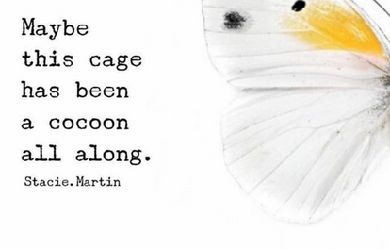

Back after such a long long time!! Things really do change!! Please don't expect good grammar, academic ability etc etc. school was a no go but...there always is one...my writings are as and when, easy, with words everyone understands...else...what's the point right?! ....in hindsight...maybe the point is "if I don't understand, I could try?!" but will I ... I'm no Bukowski...but the fact that I know of and Love his guts/writing/rebellion says it all. School....overrated "if you don't want your book to be judged by its cover...should you really write one?" Questions always gratefully received, my answers might not be" Music/book/film fiend...for fun! "it's just a ride" *Bill Hicks ABOVE ALL ELSE...MY LITERARY HERO..."The edge, there is no honest what to explain it because the only people who really know where it is are the ones that have gone over" *Hunter. S. Thompson


